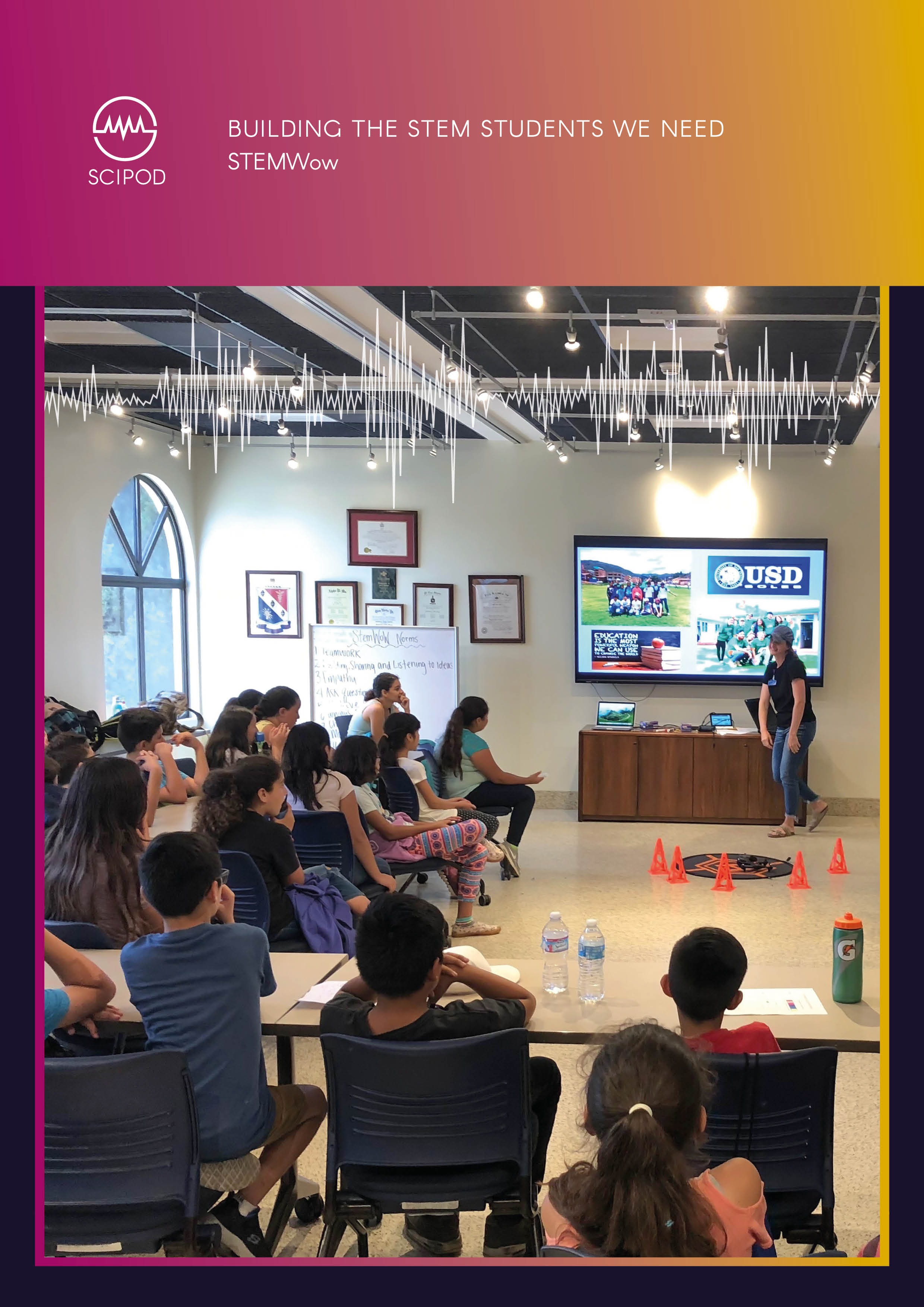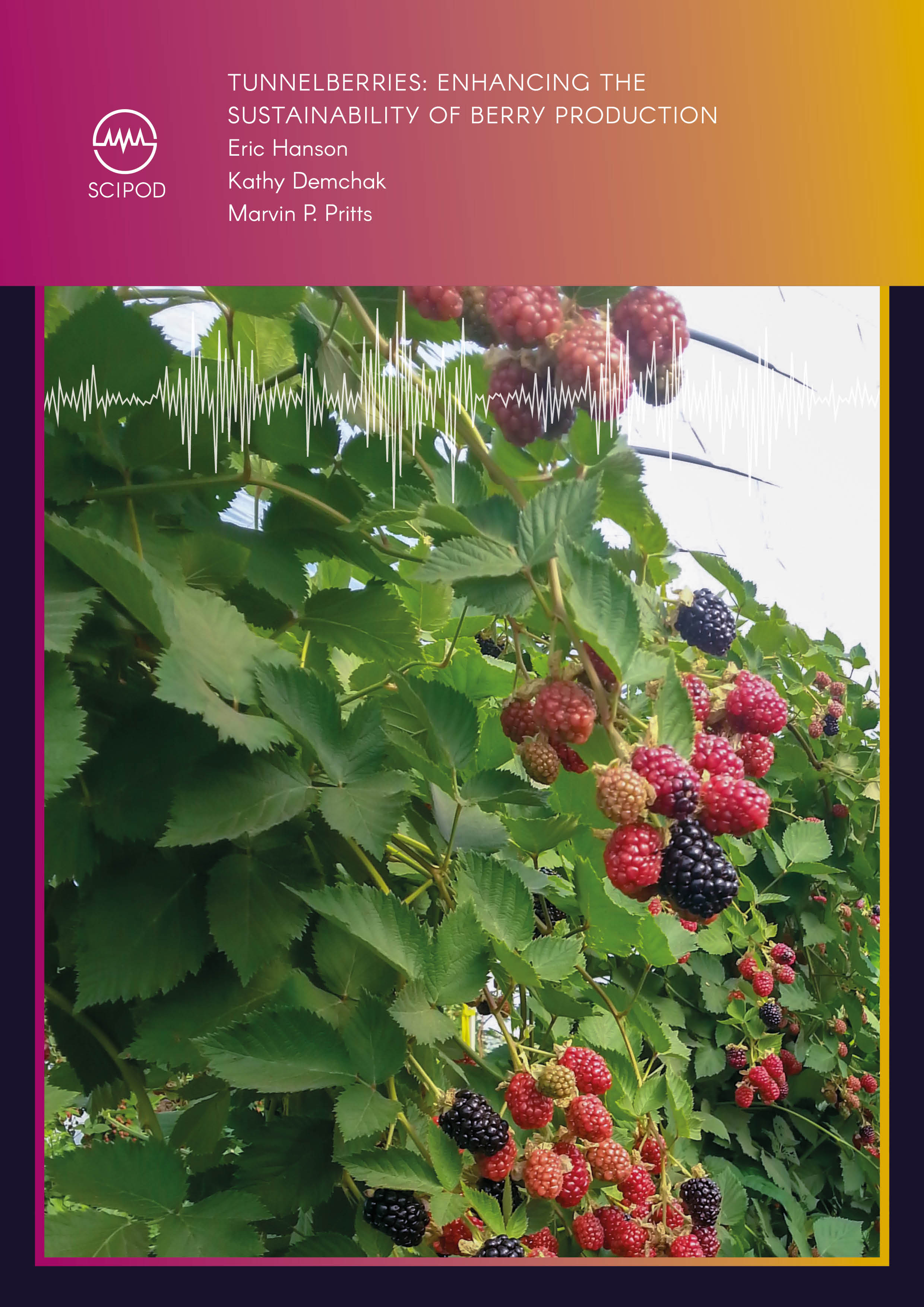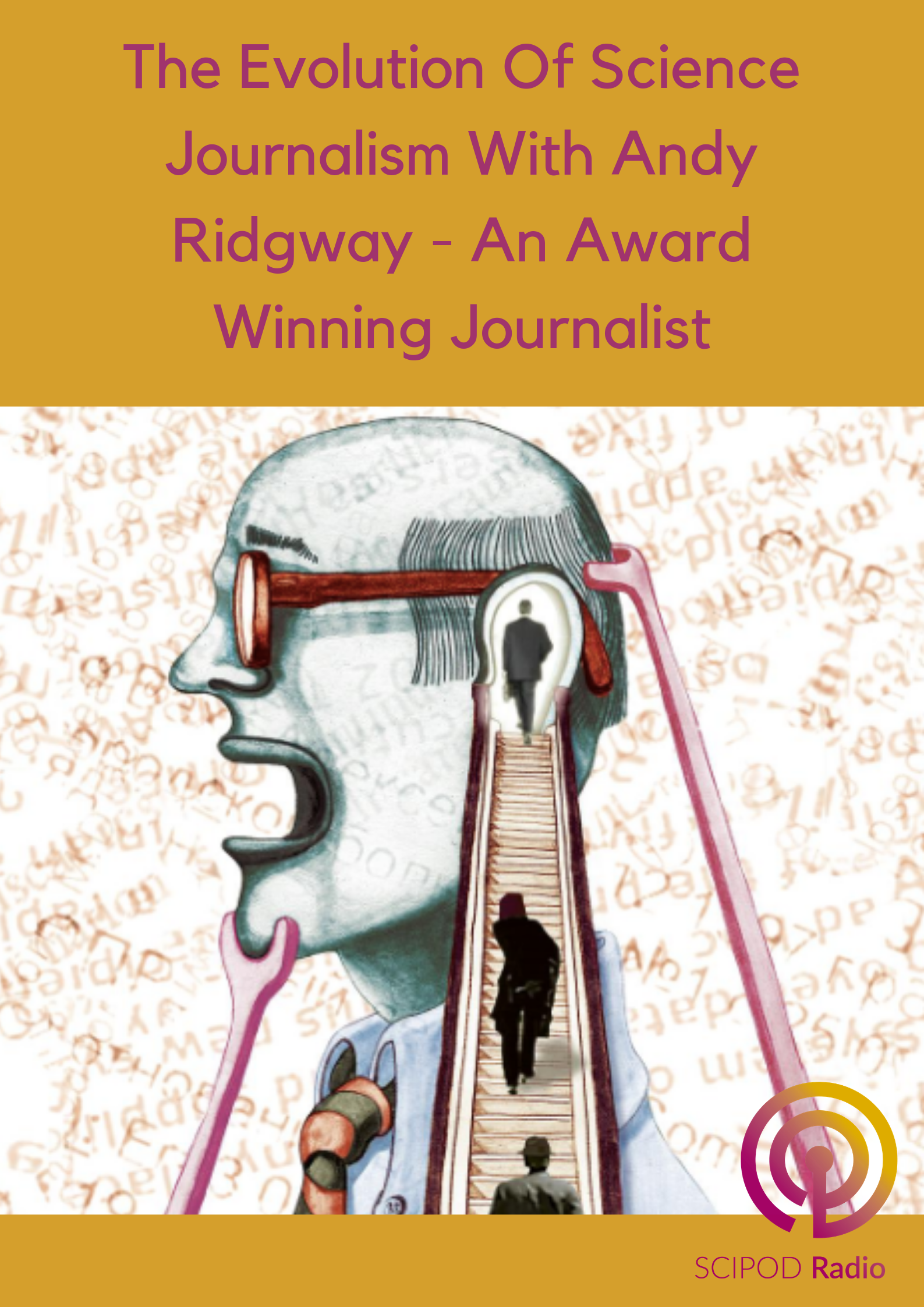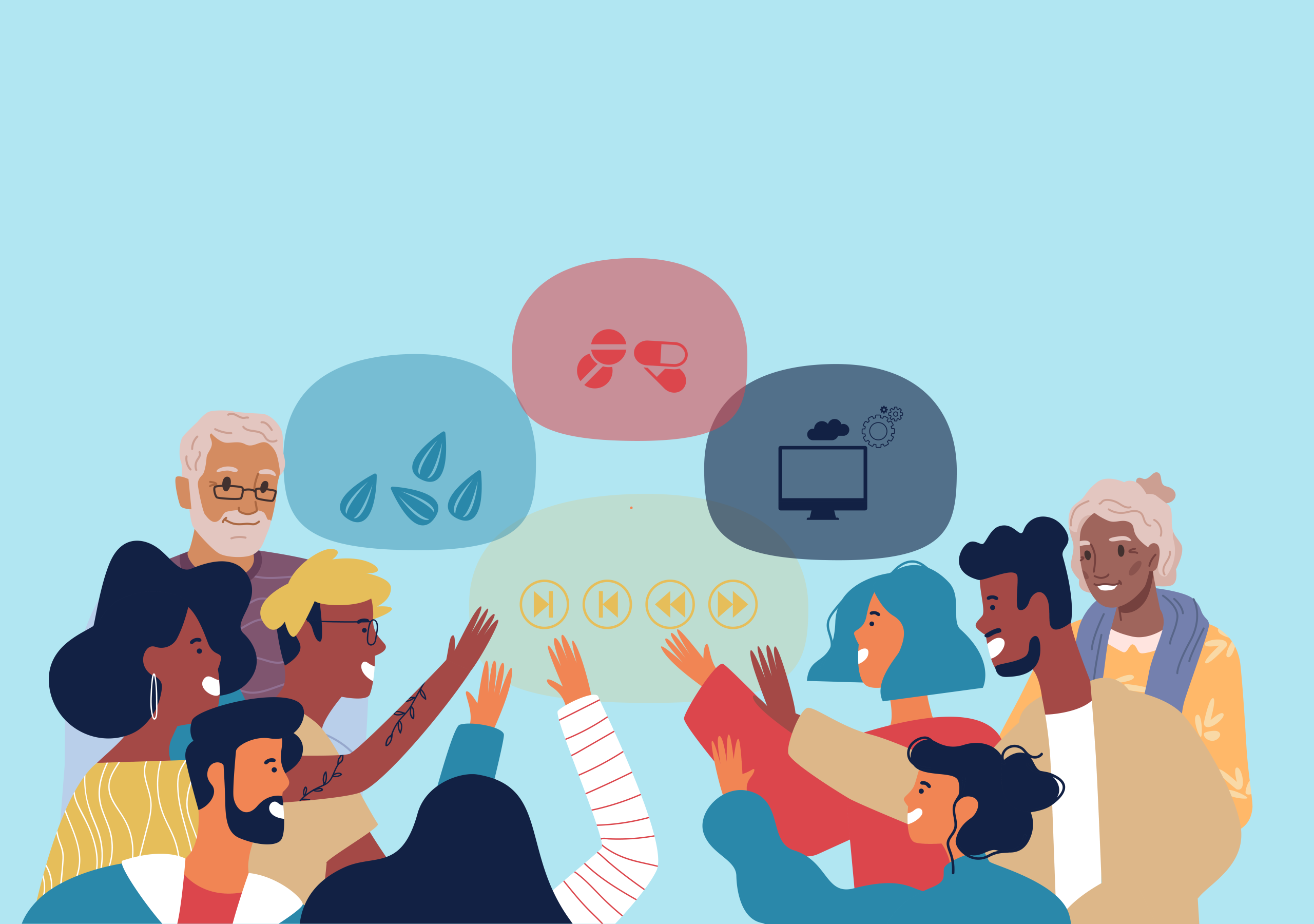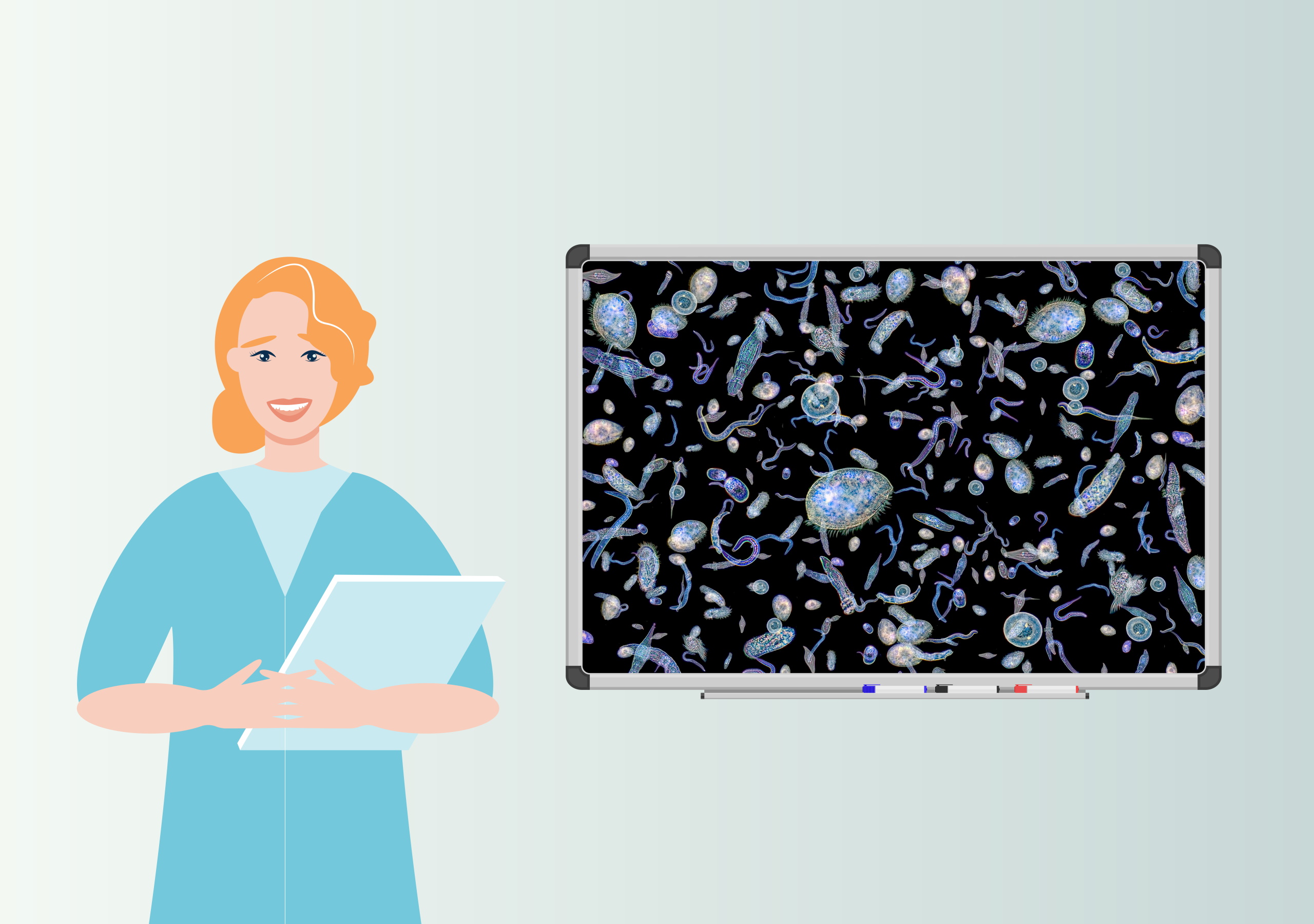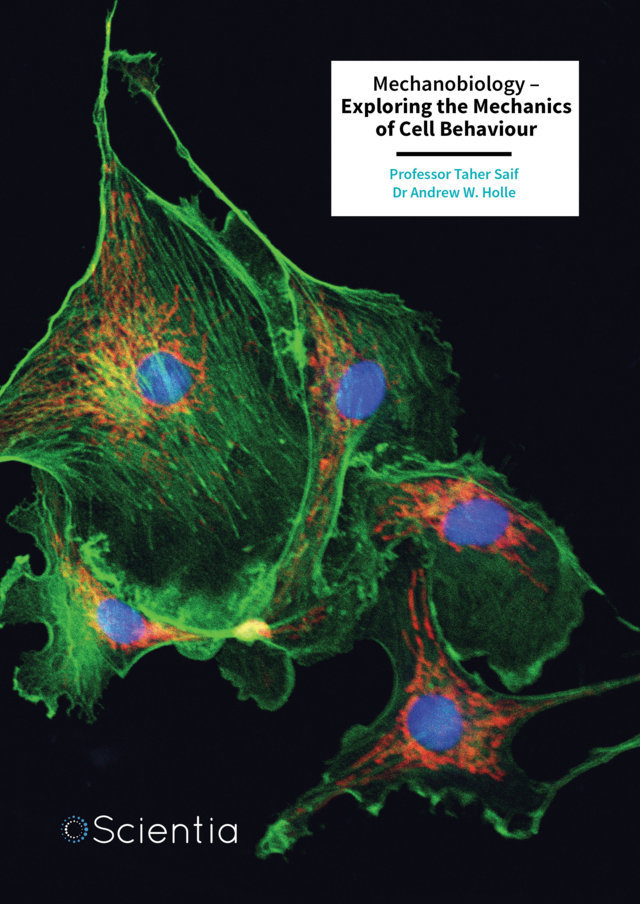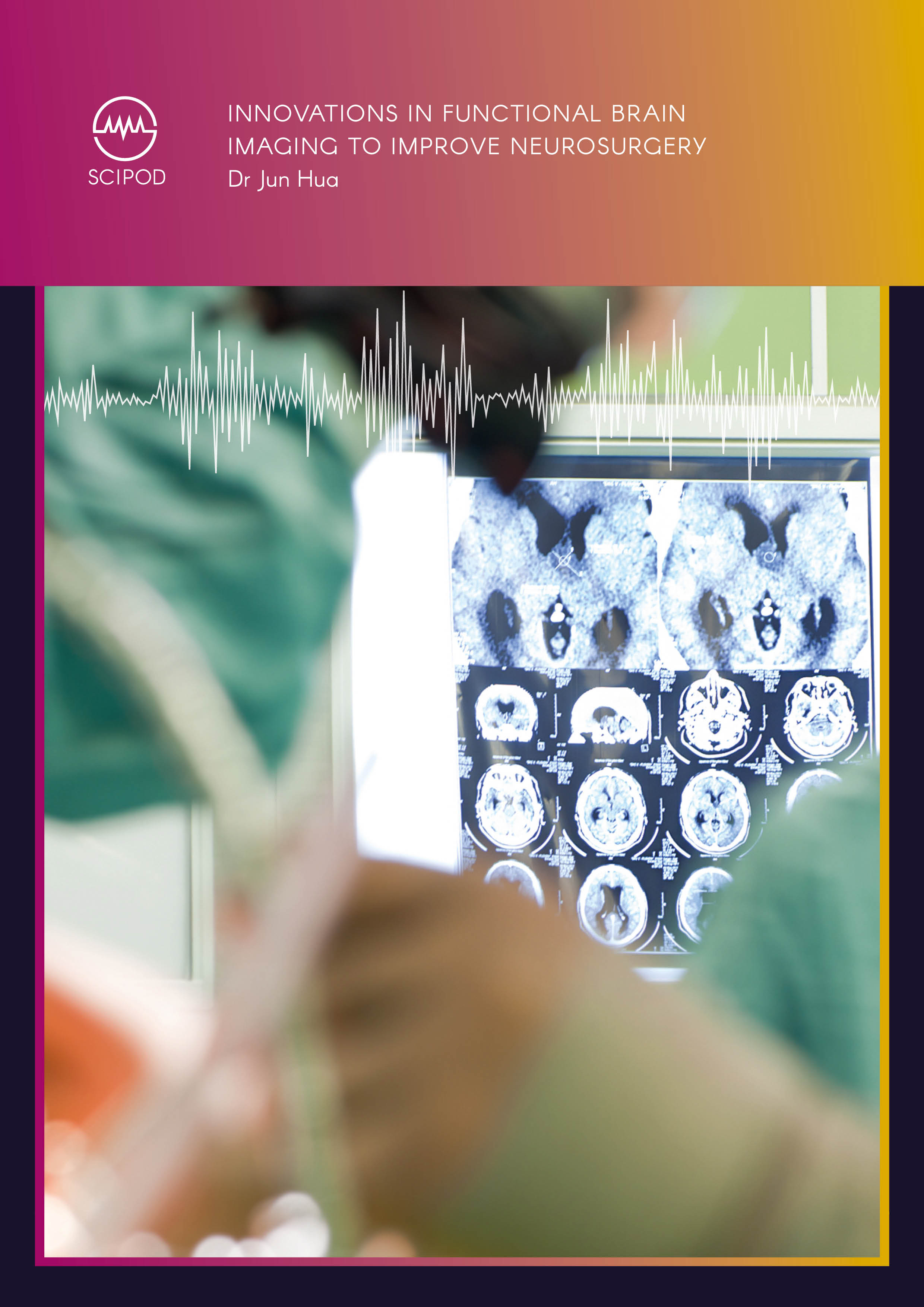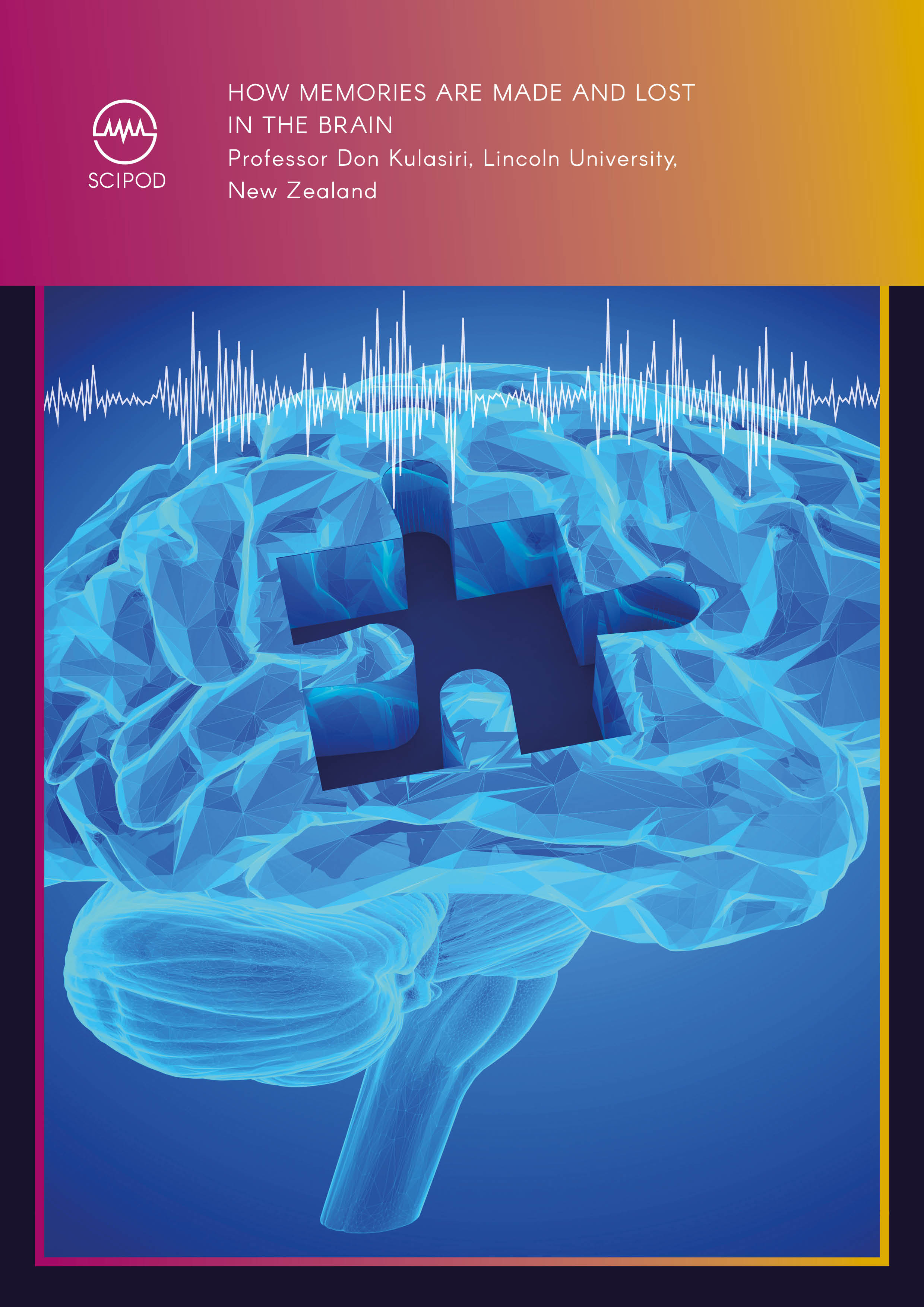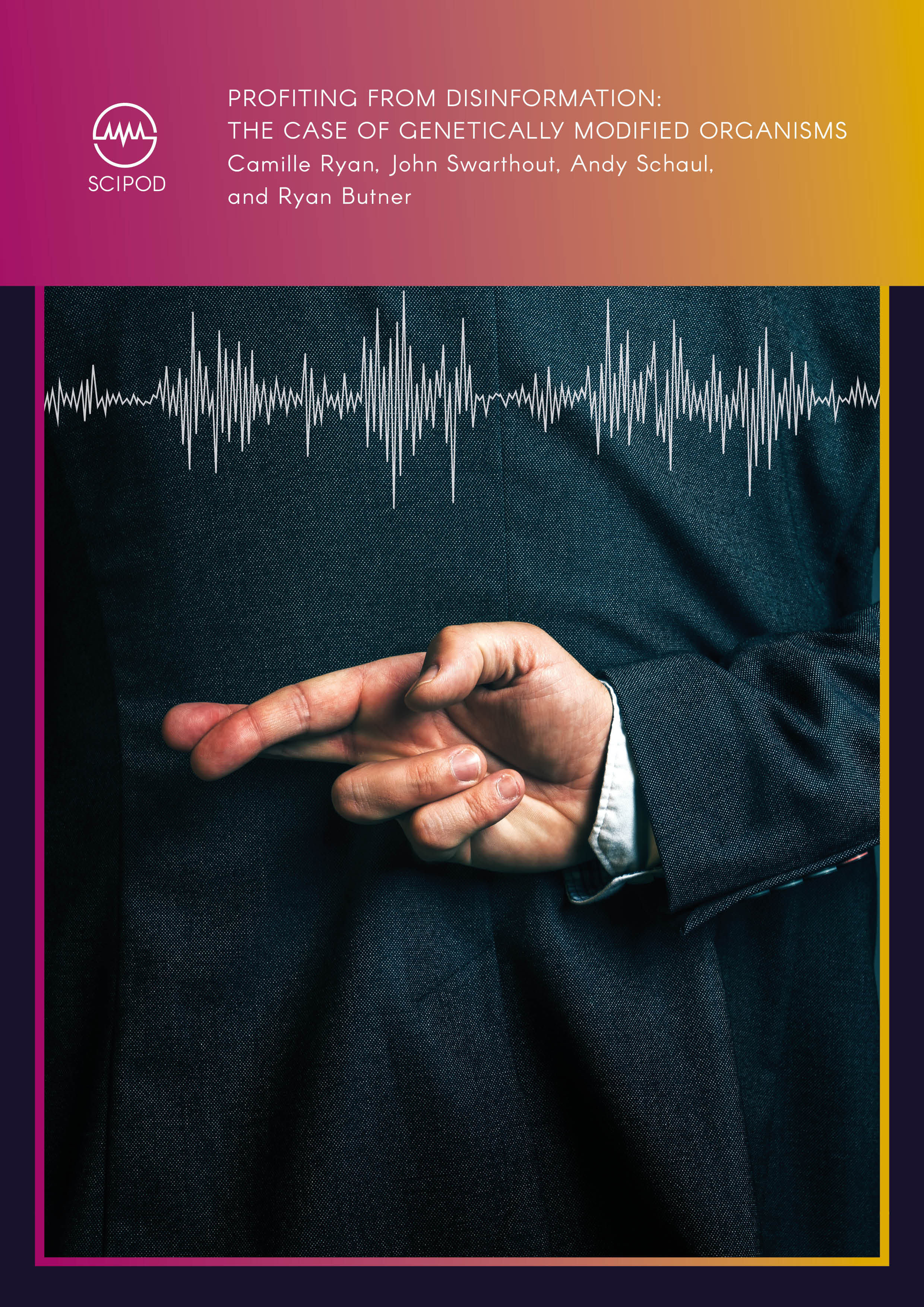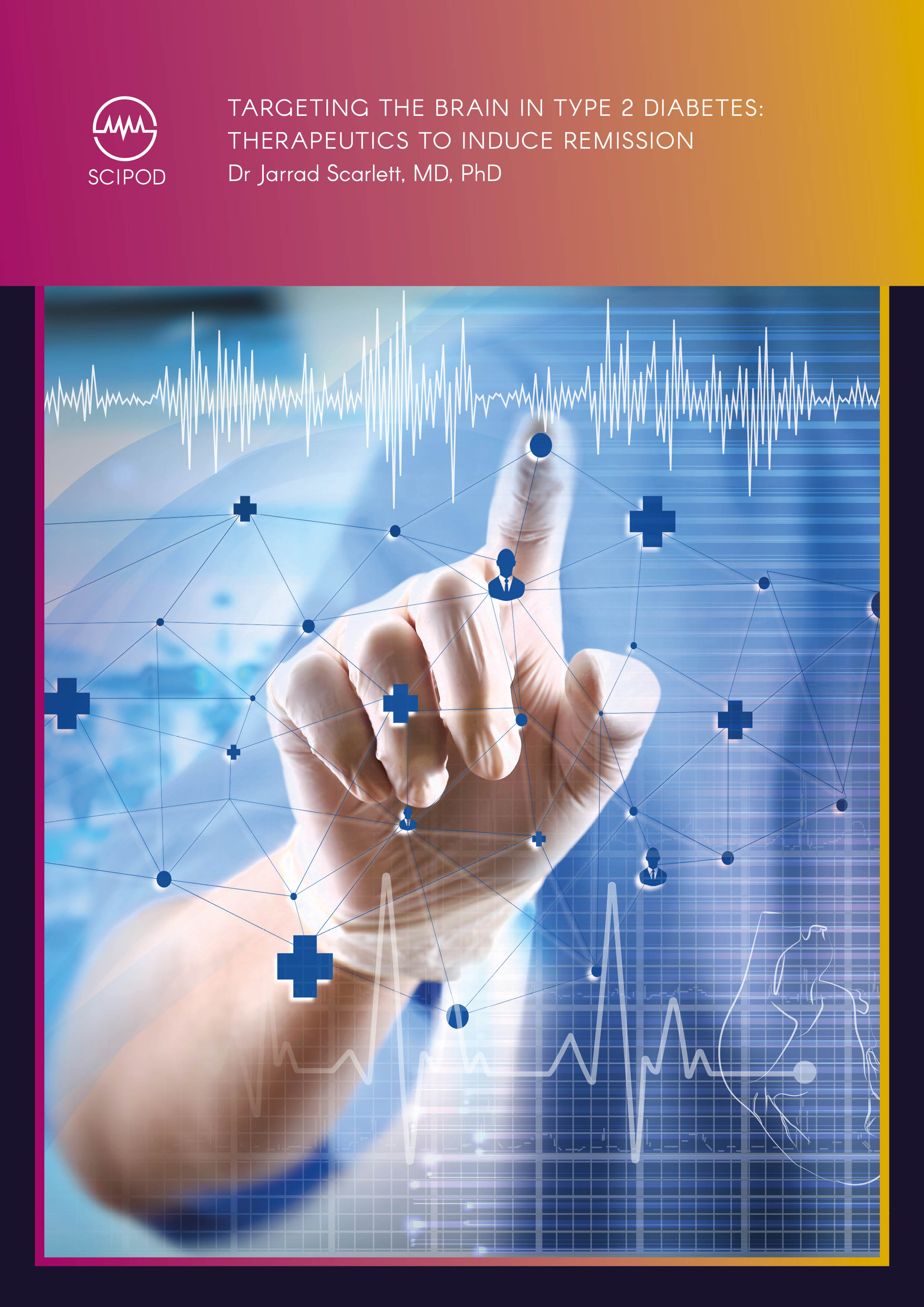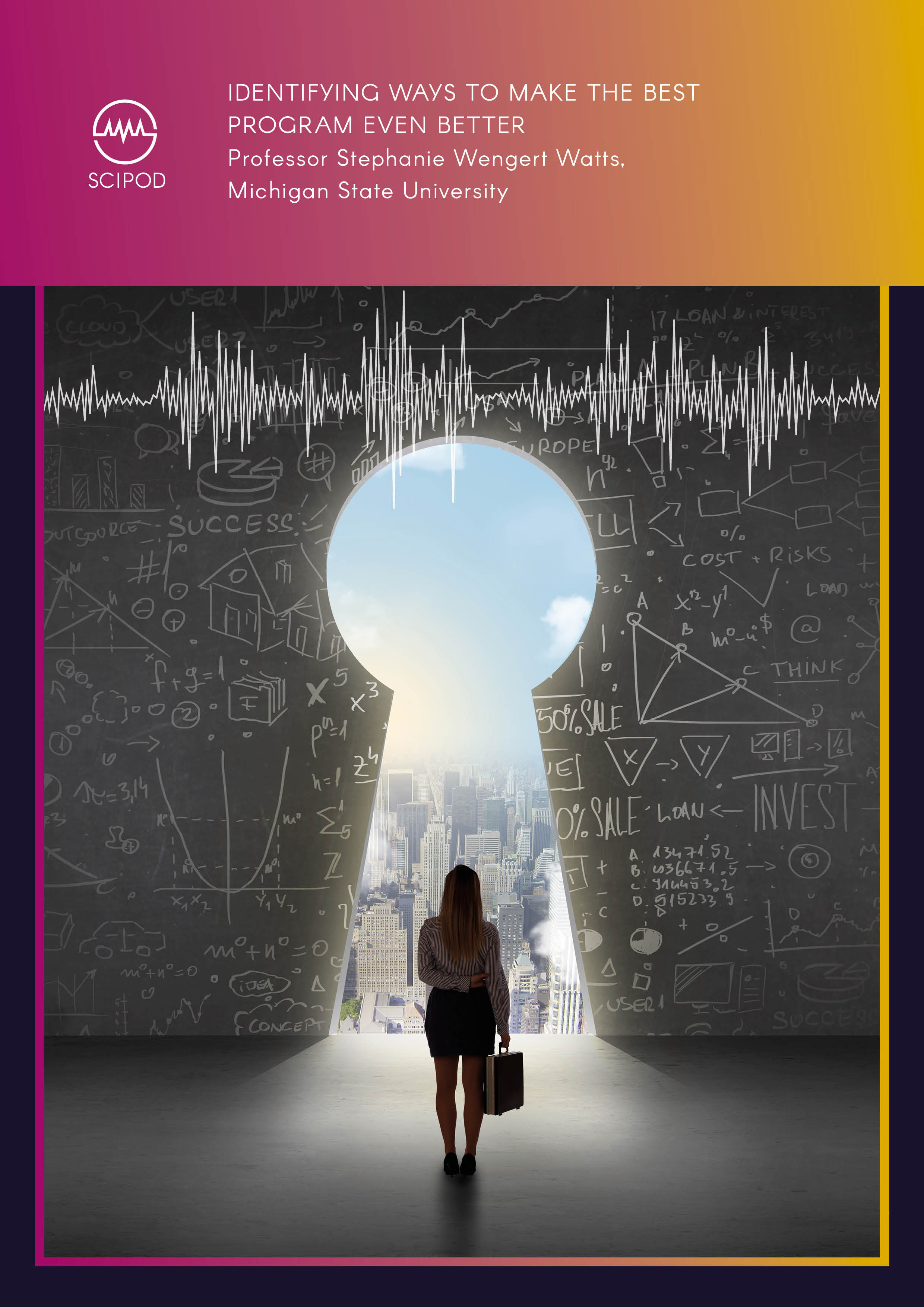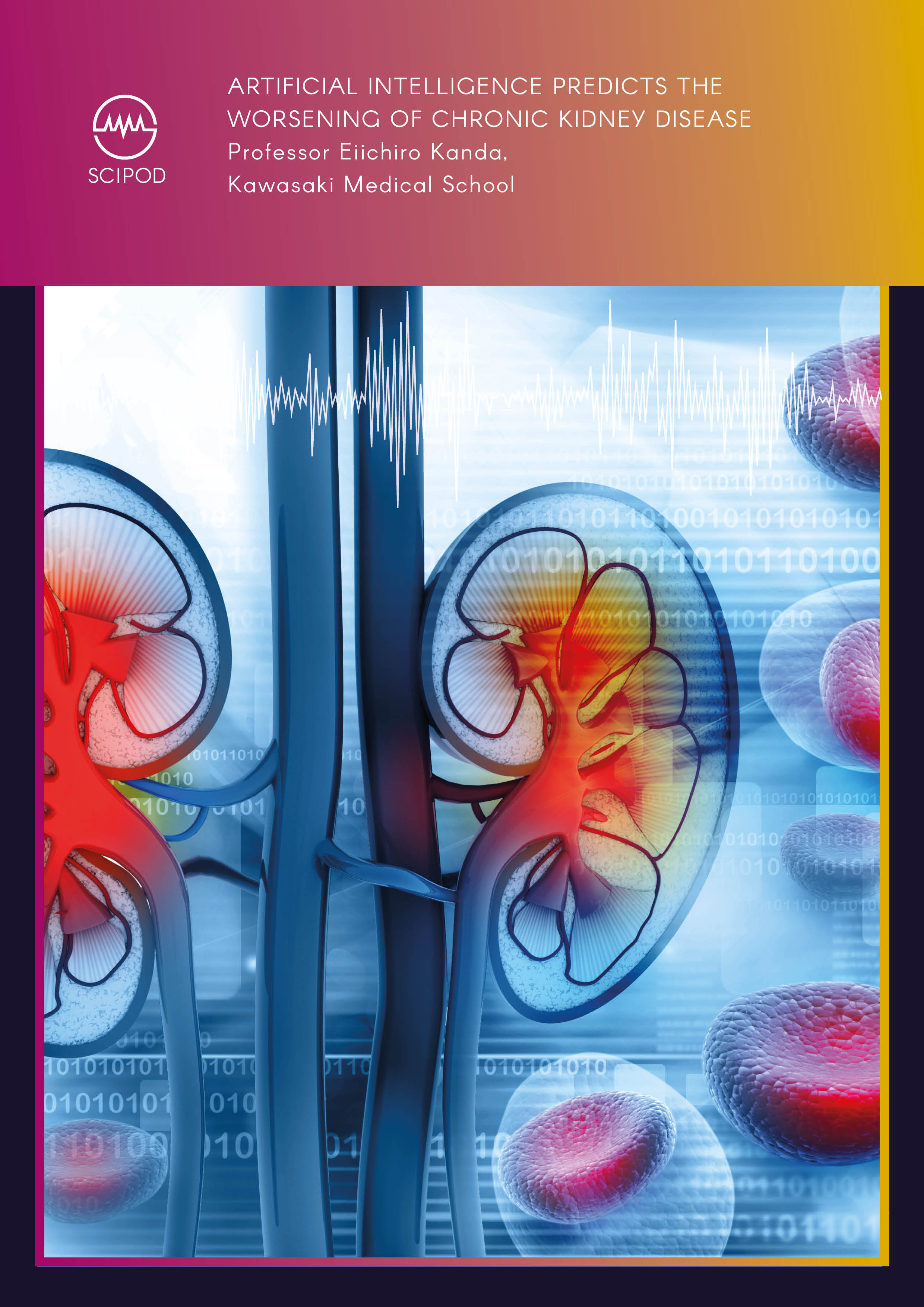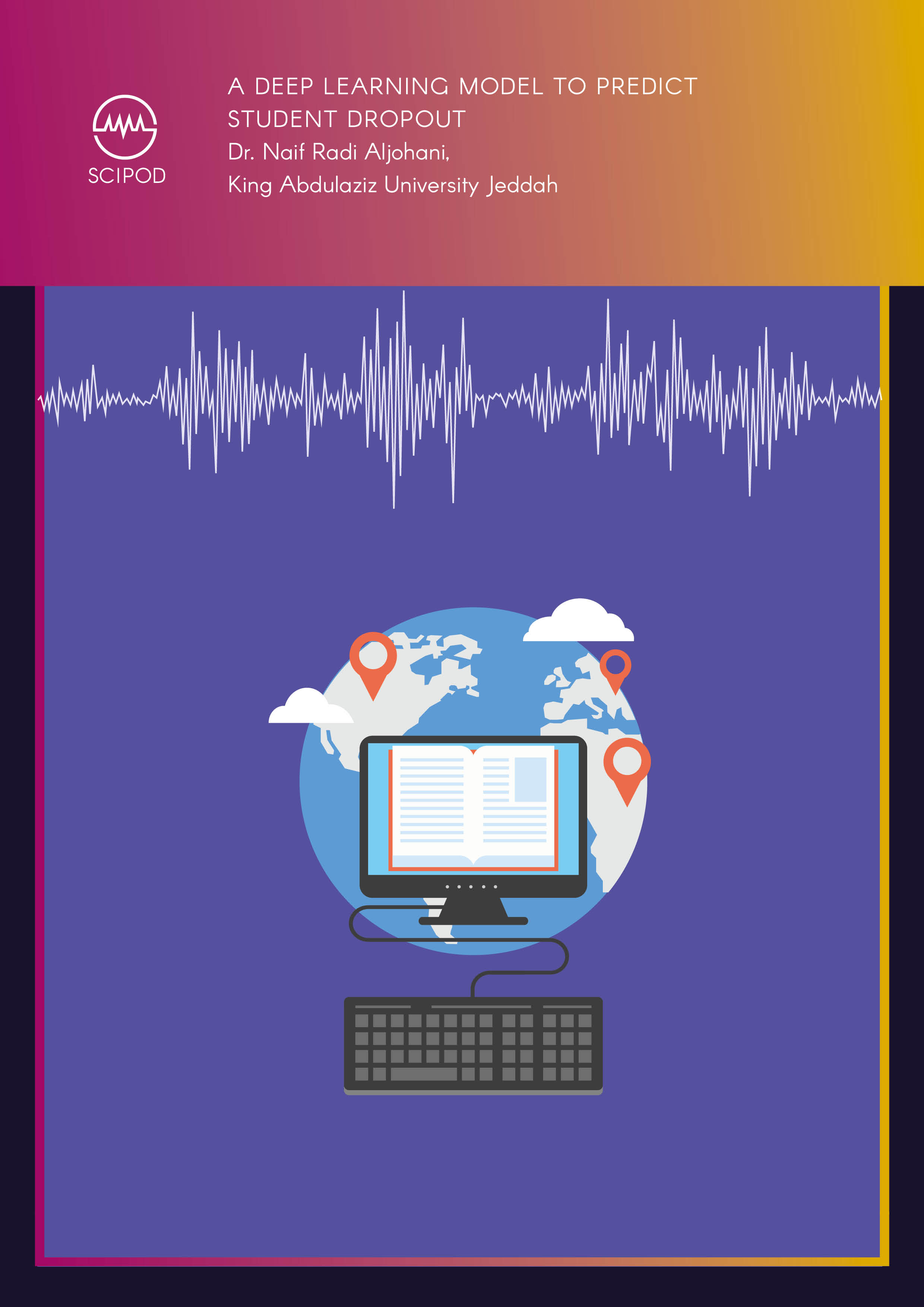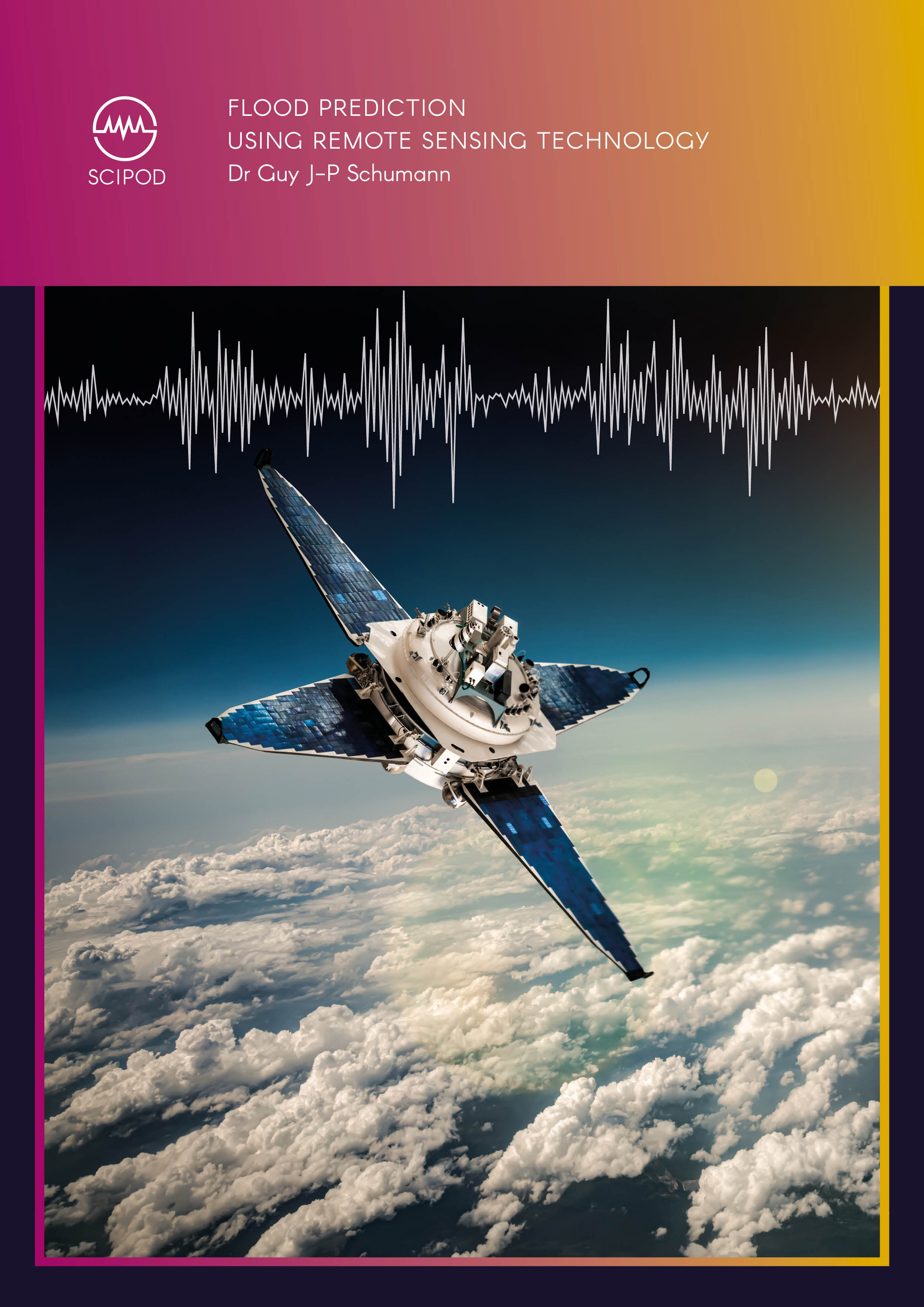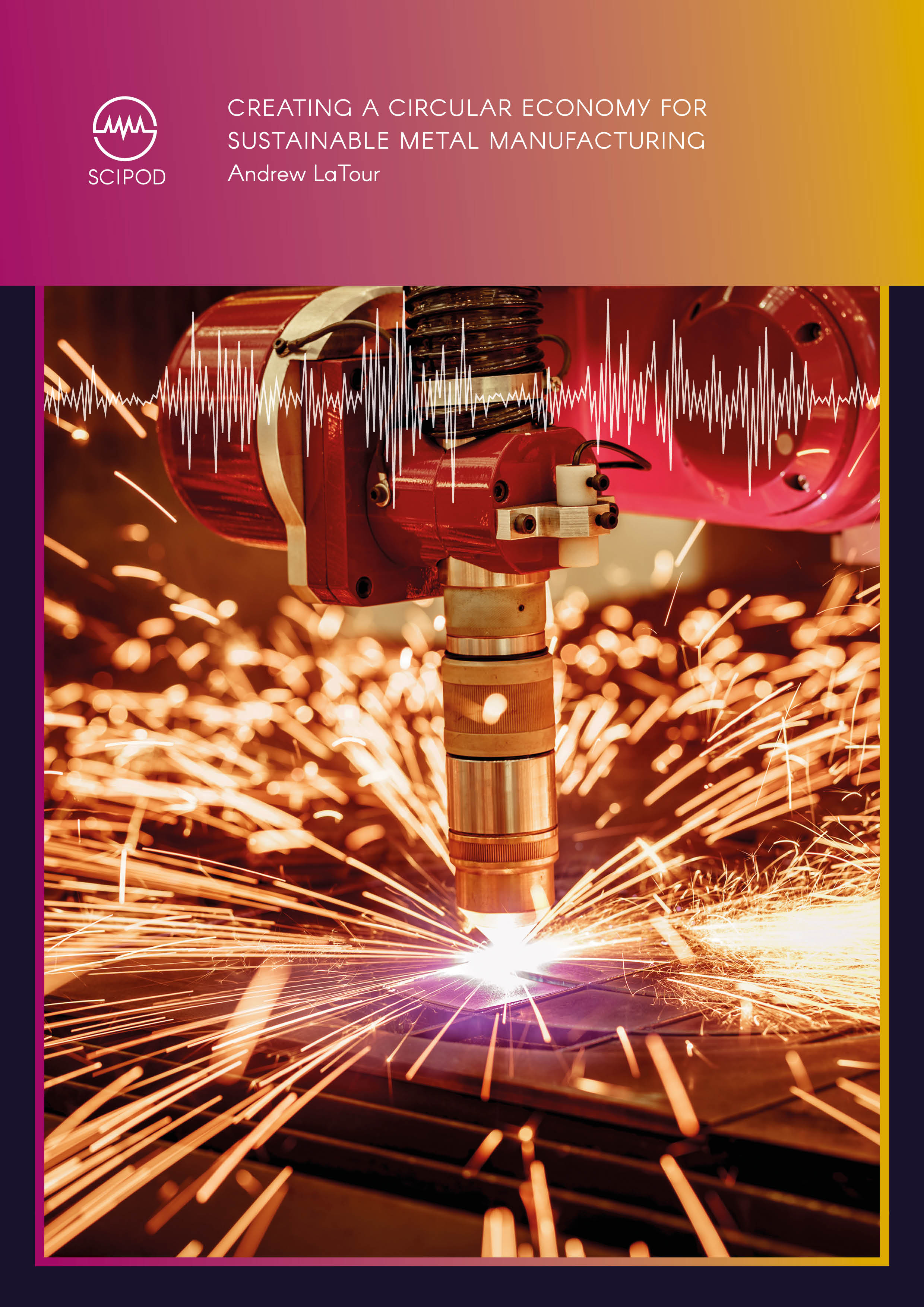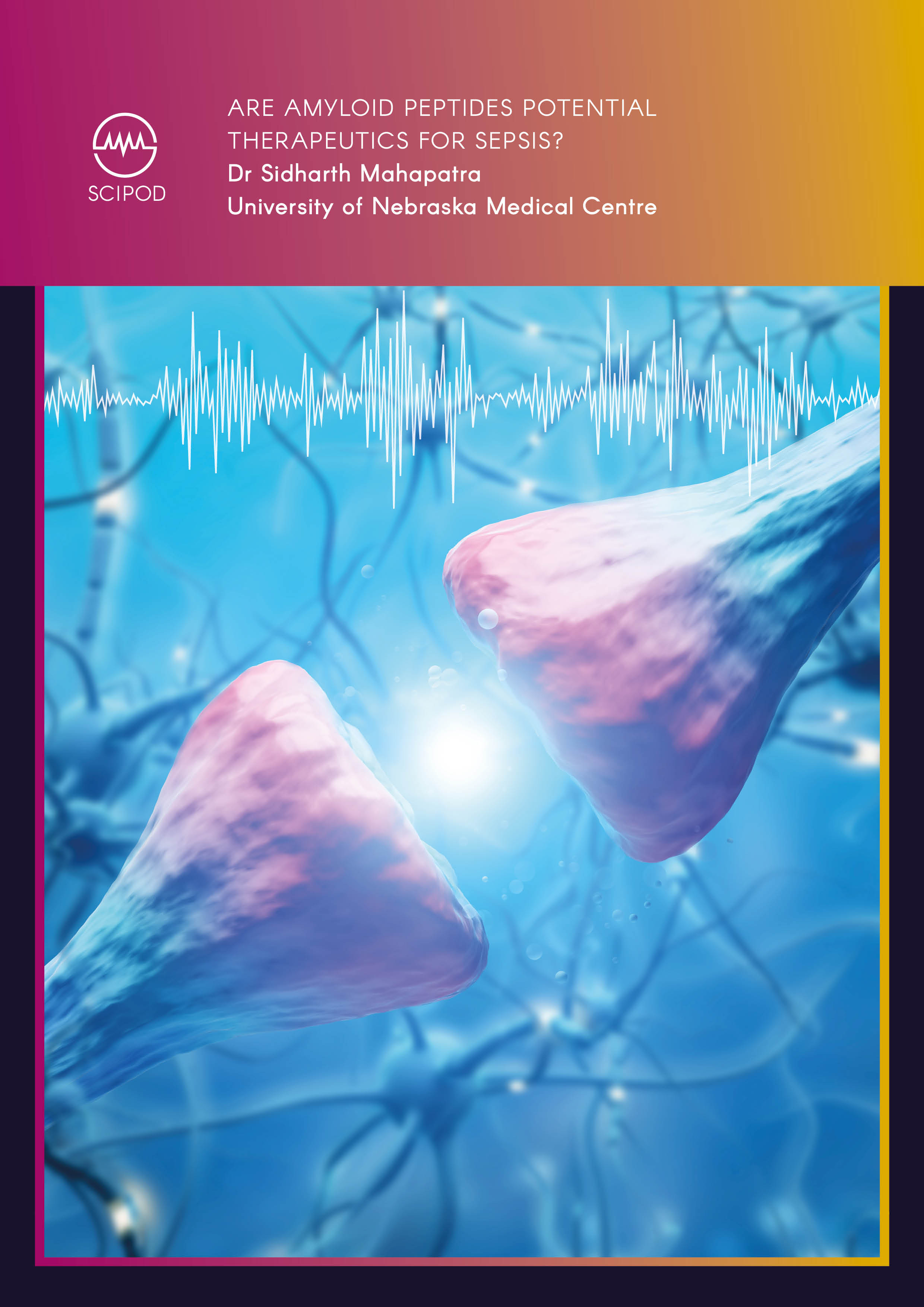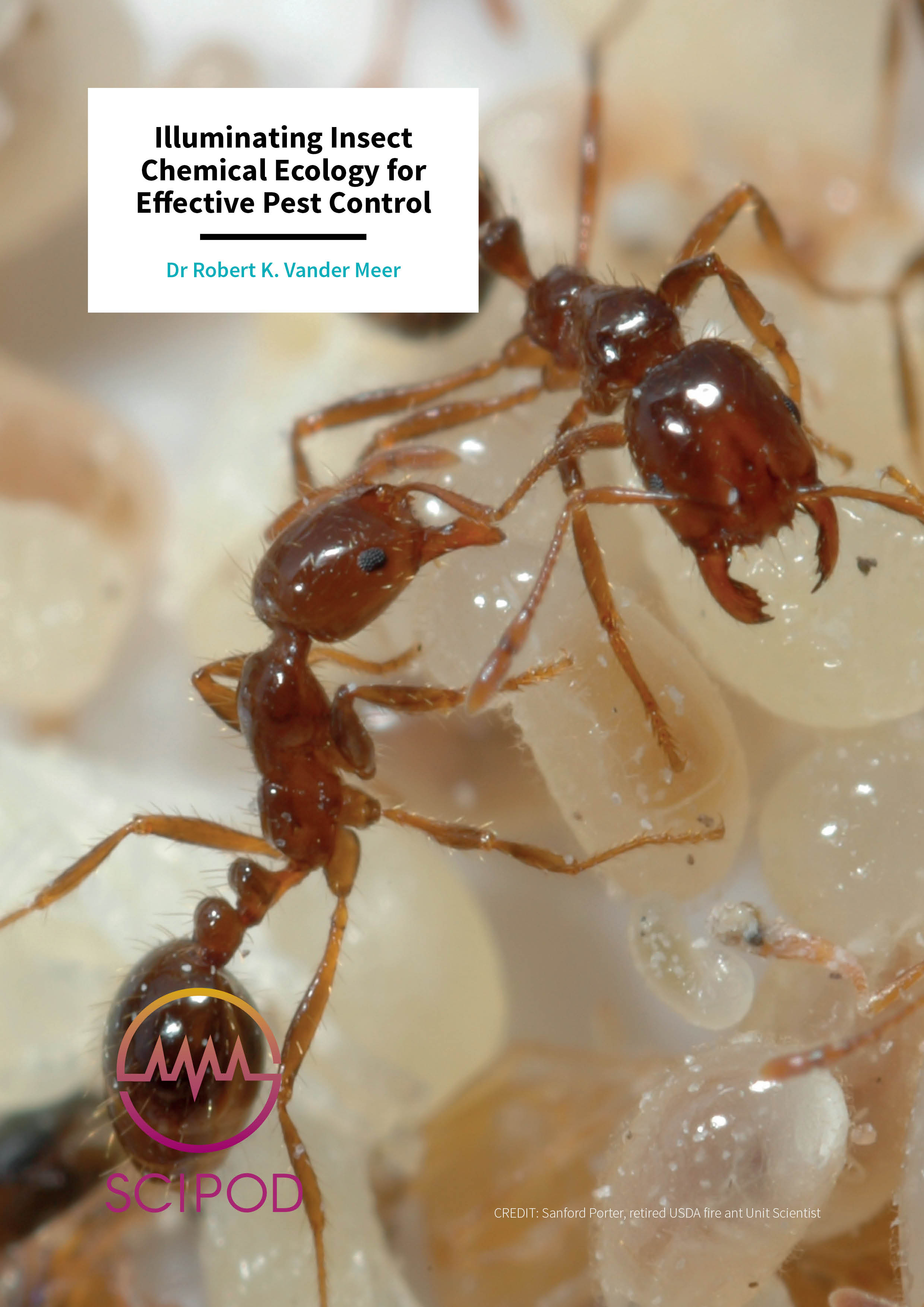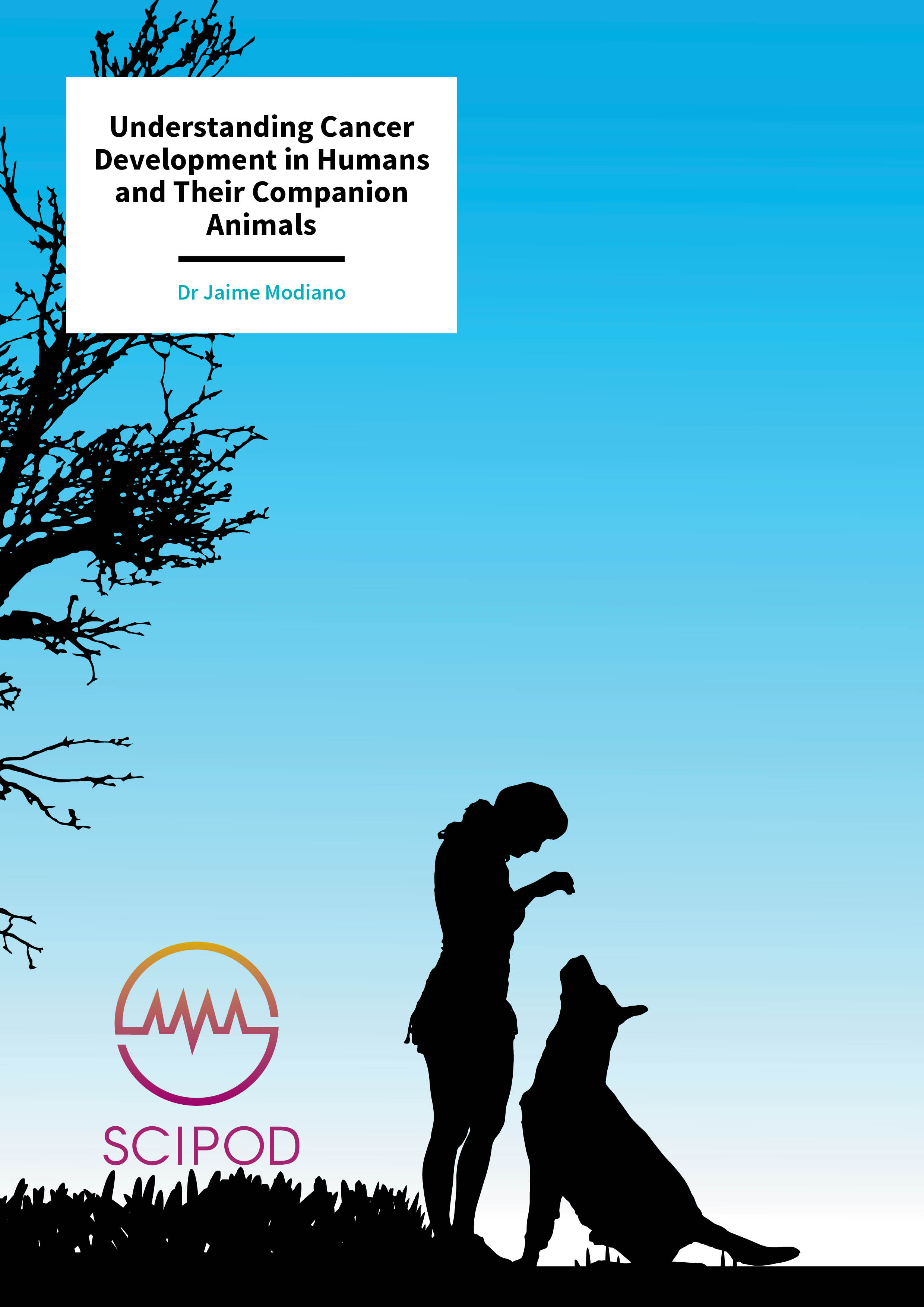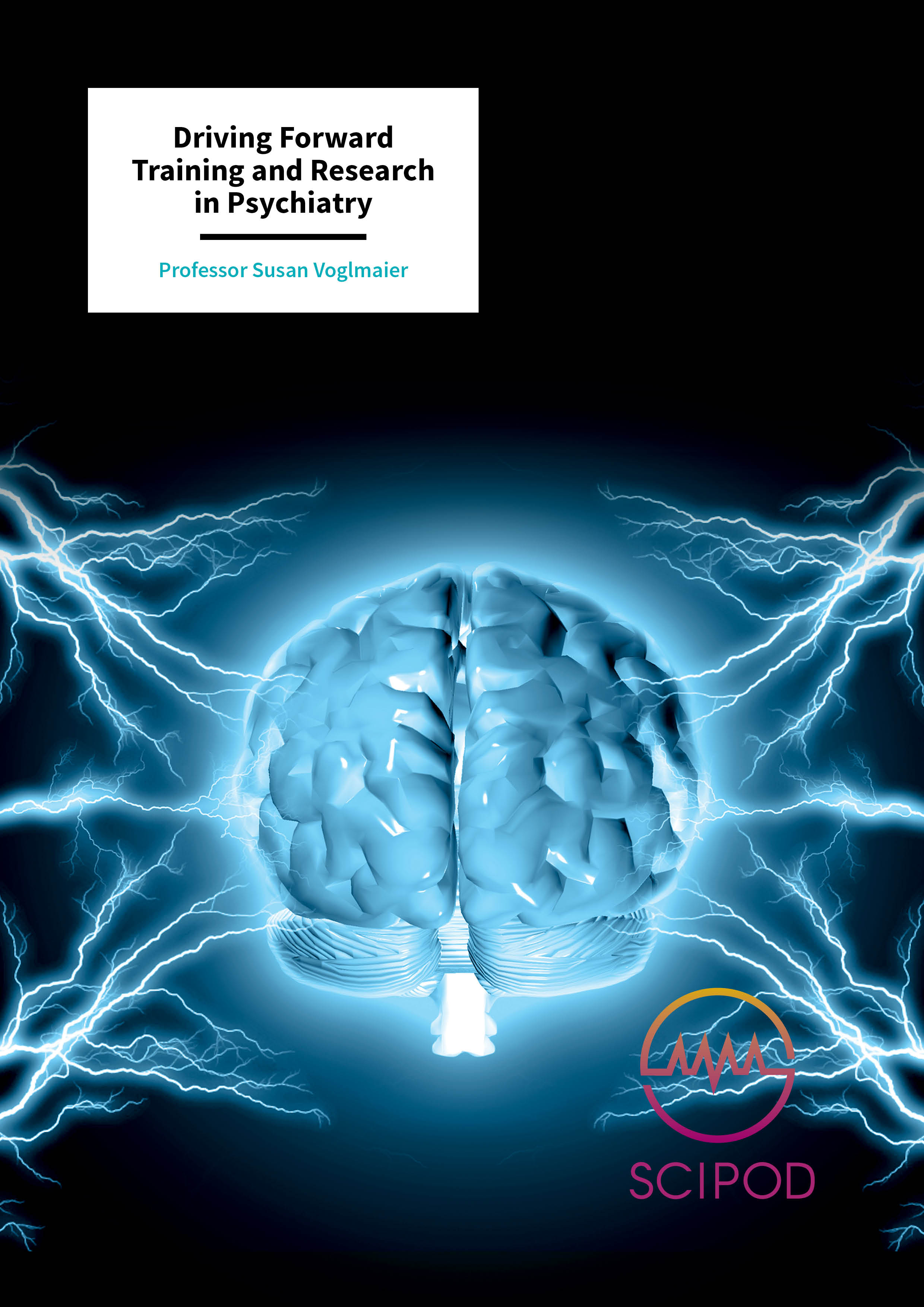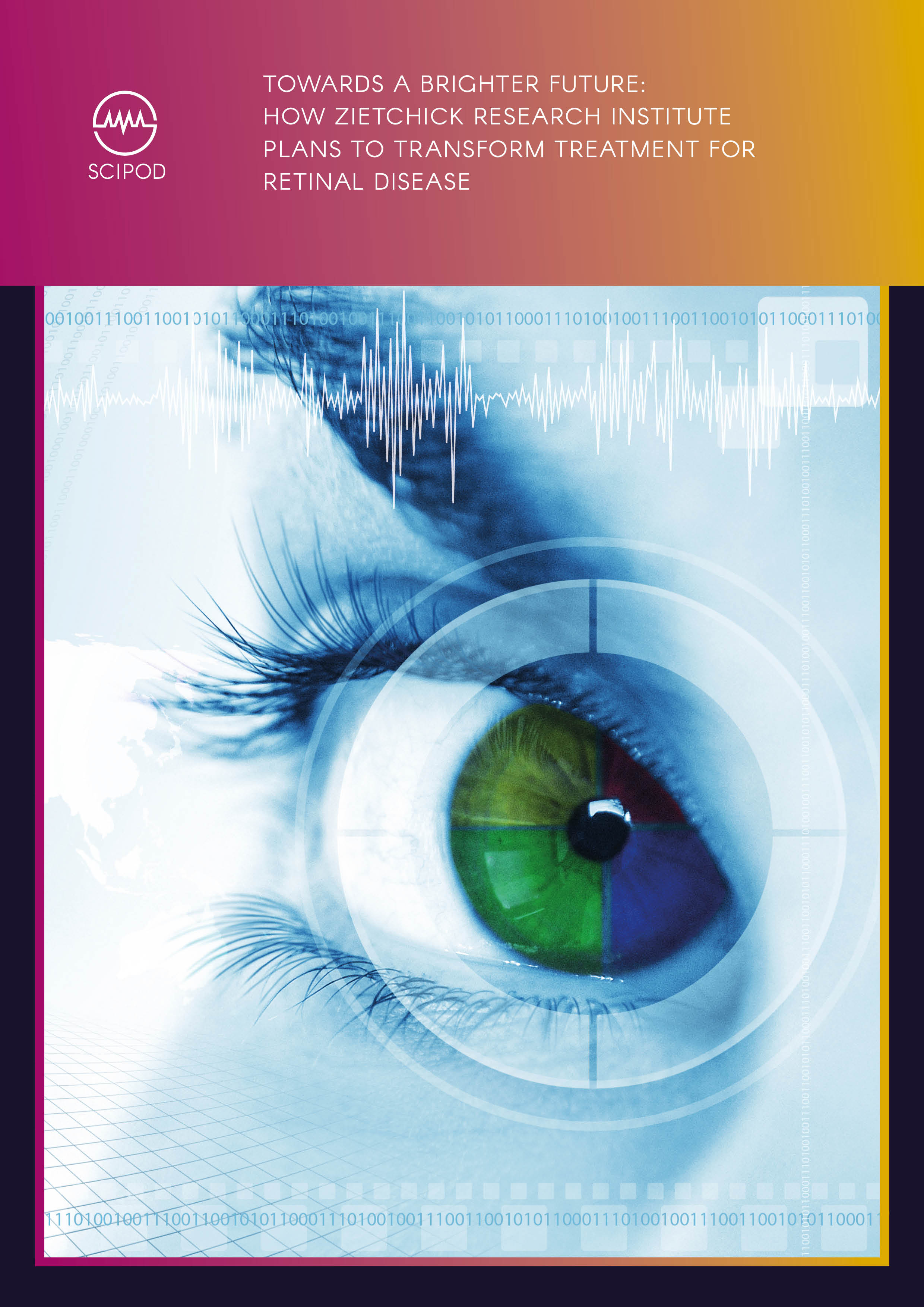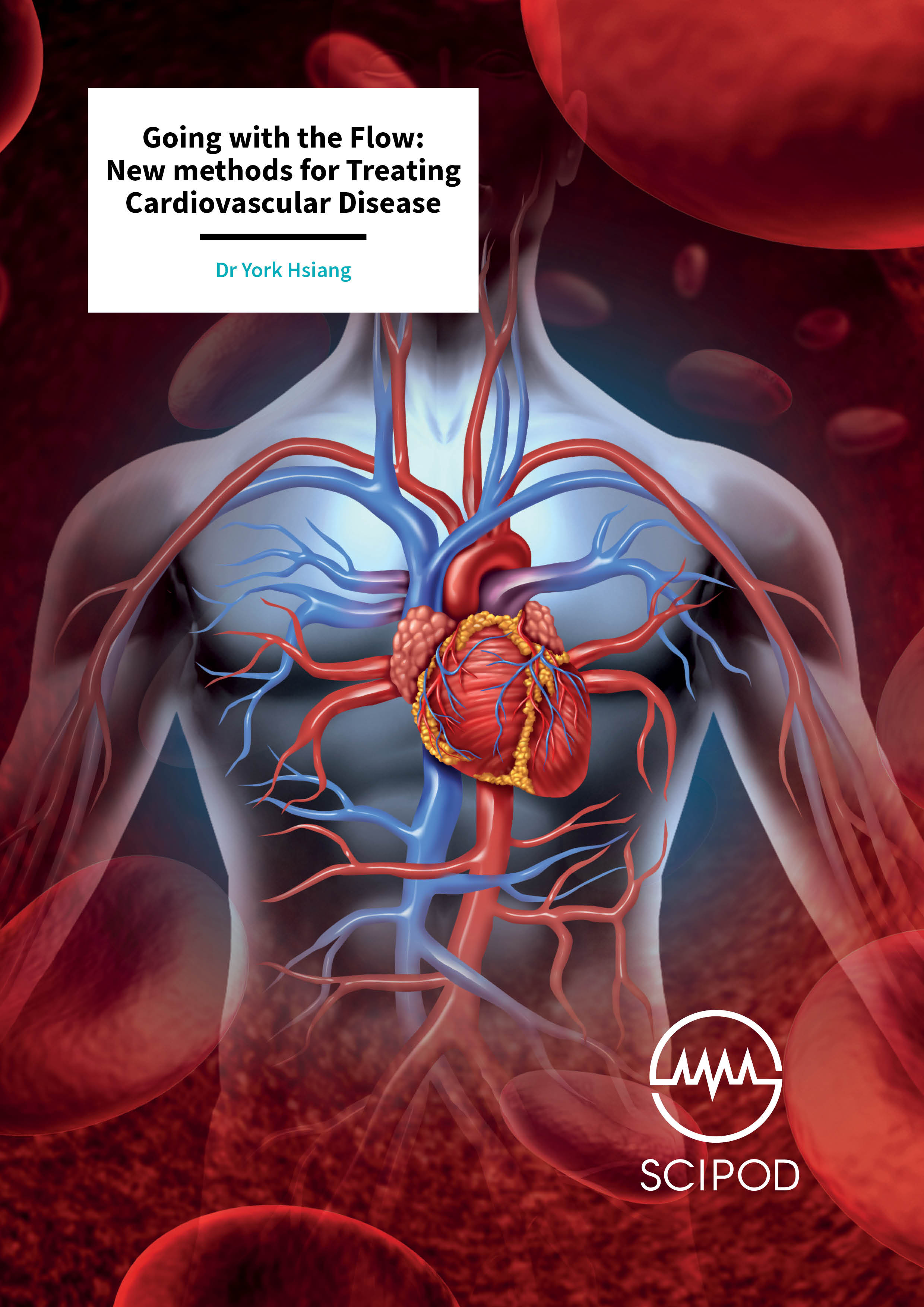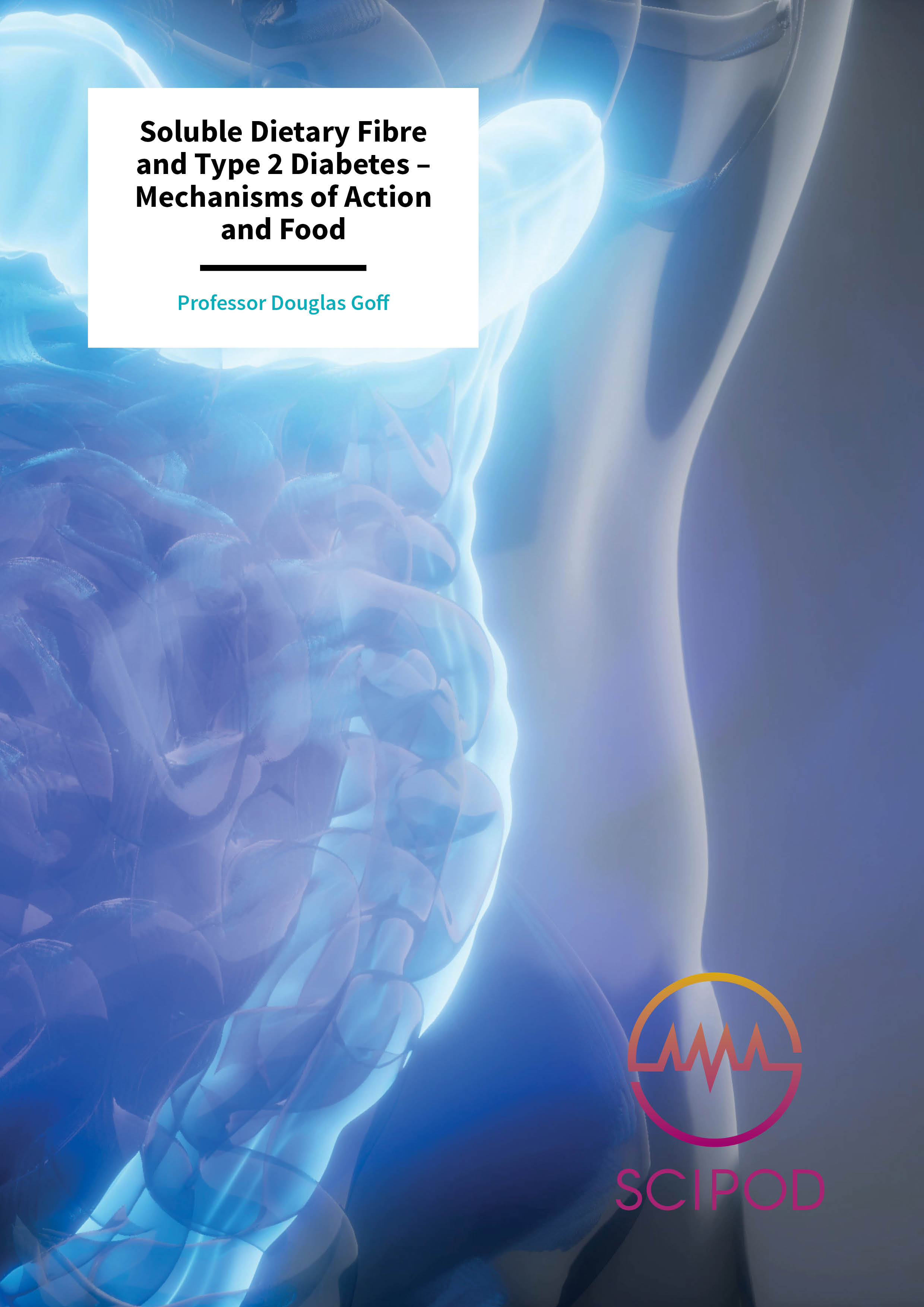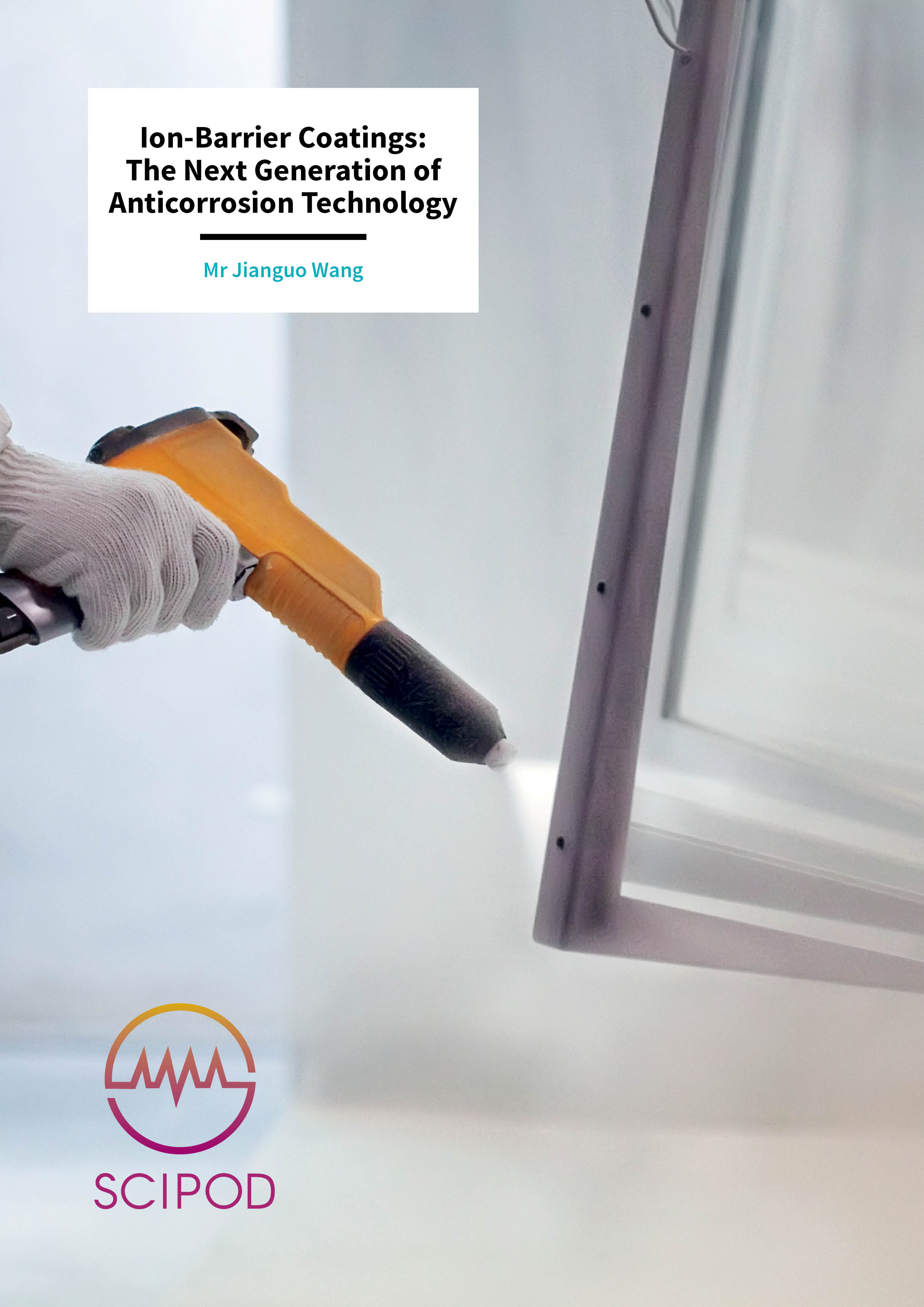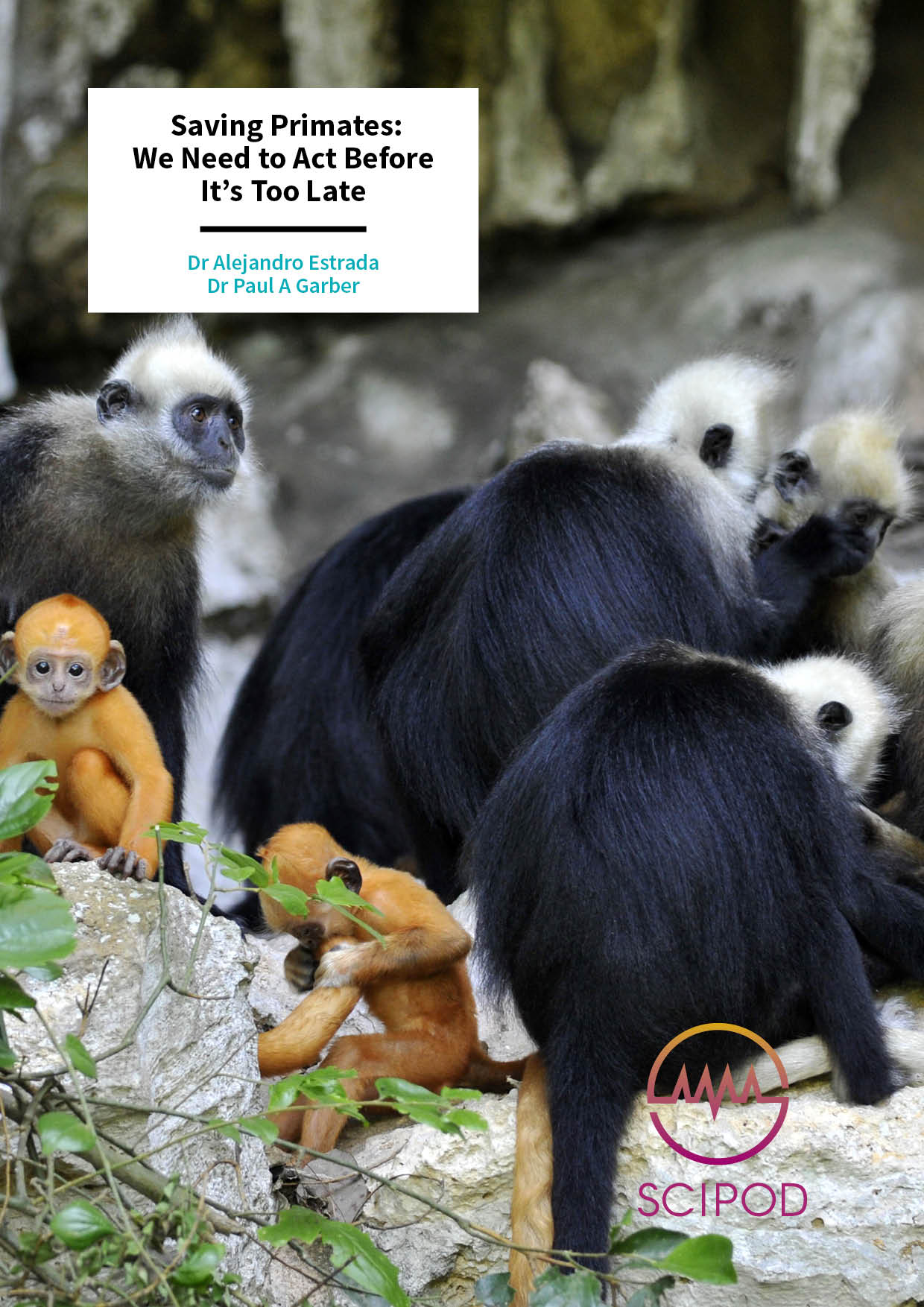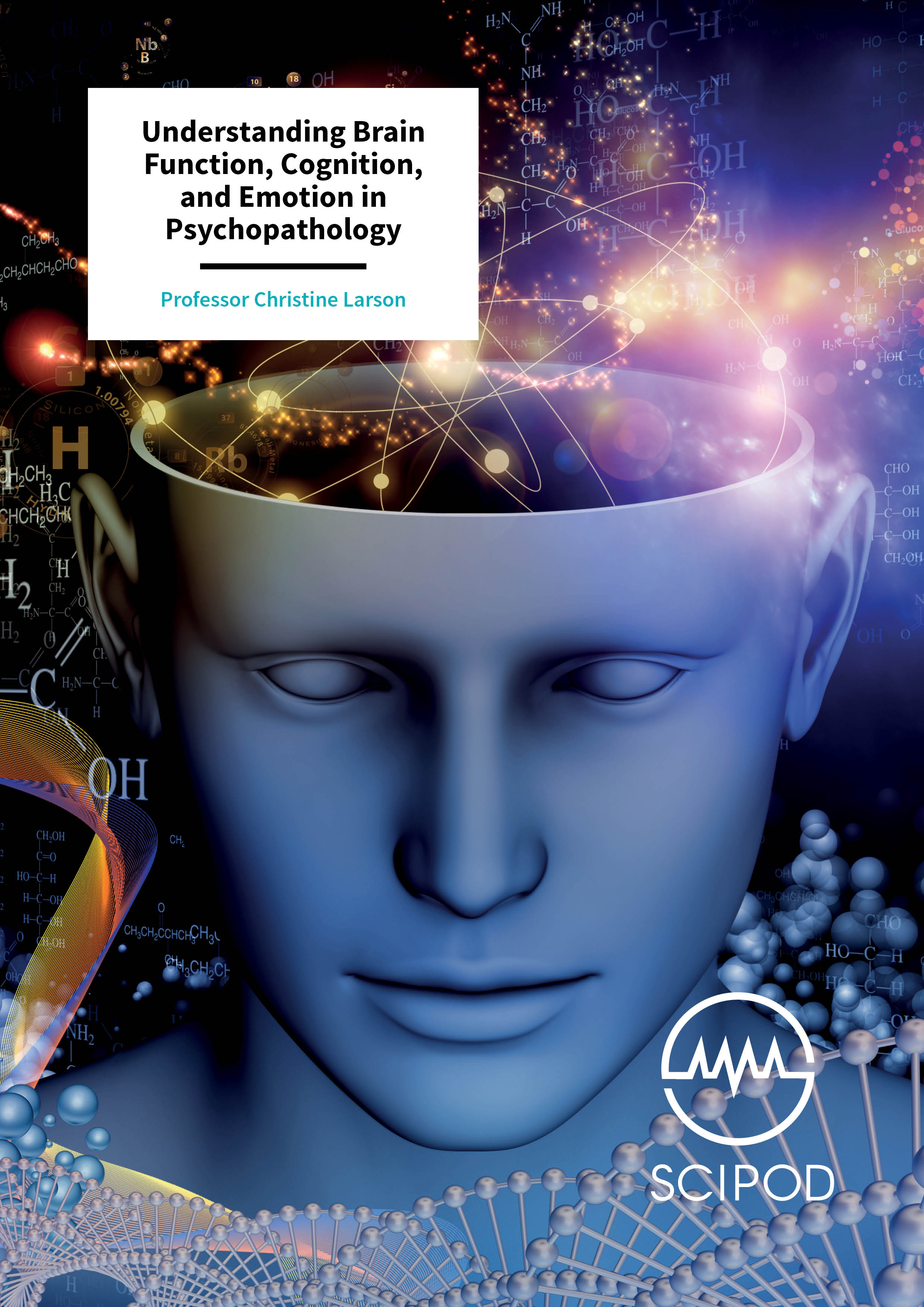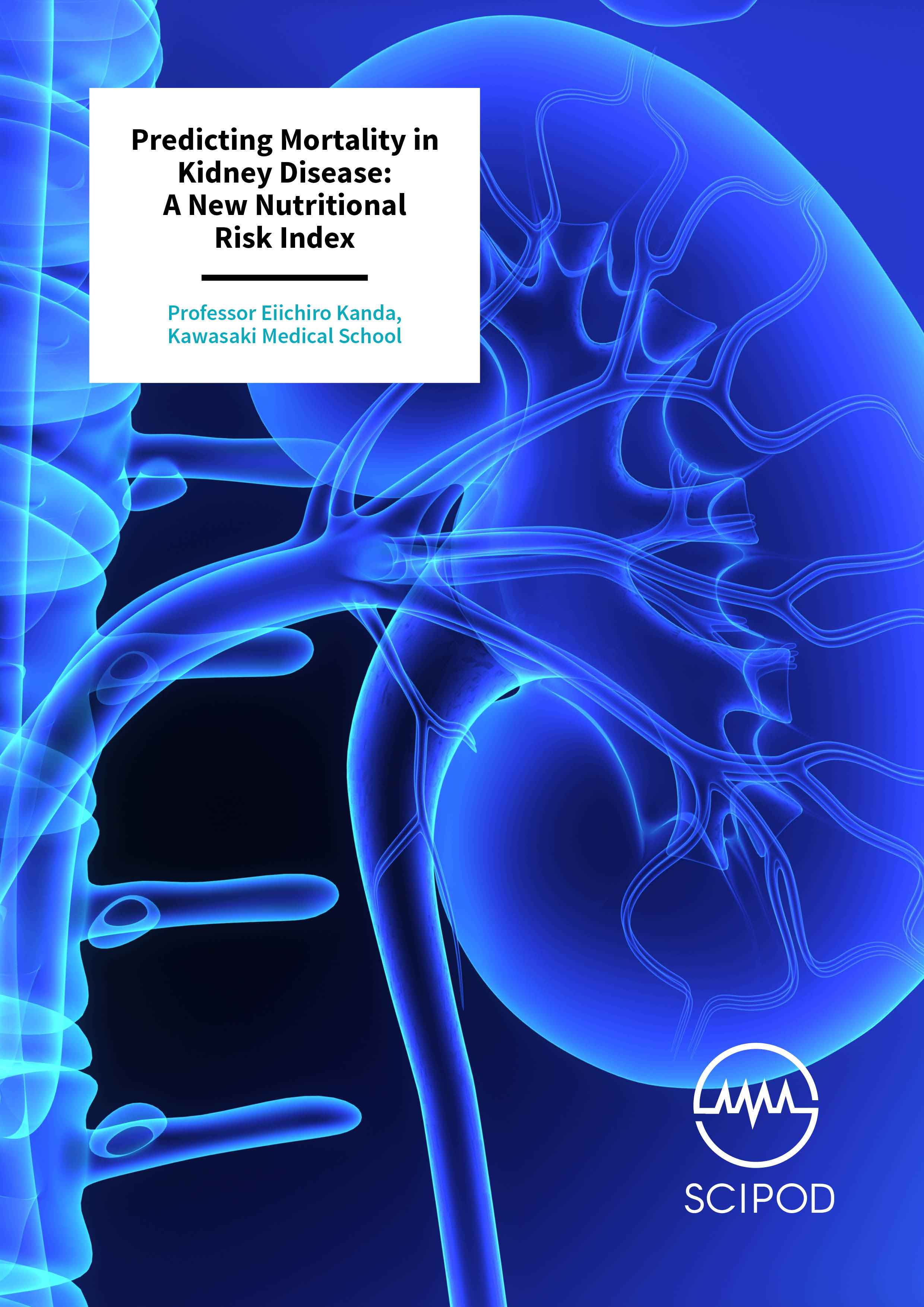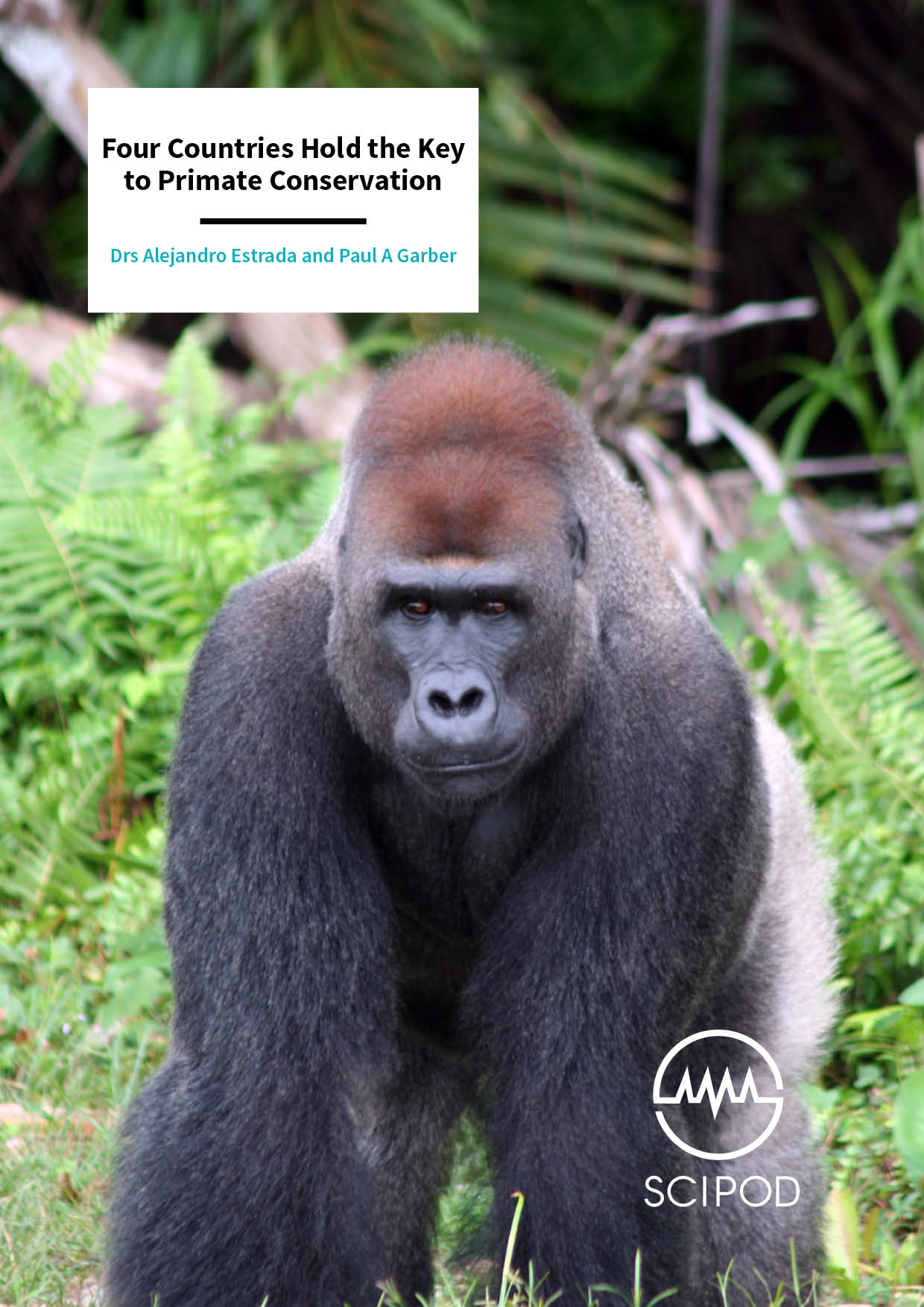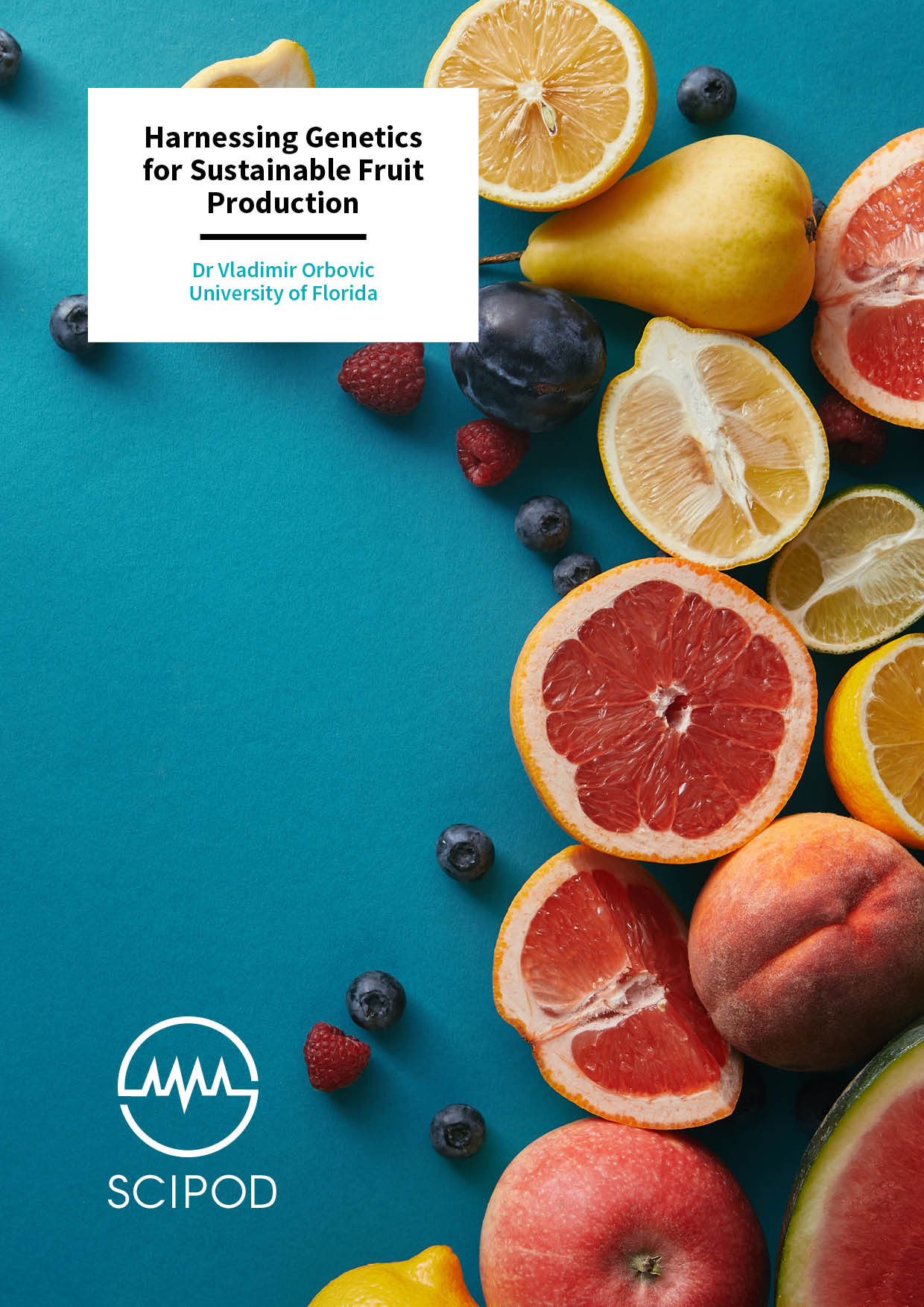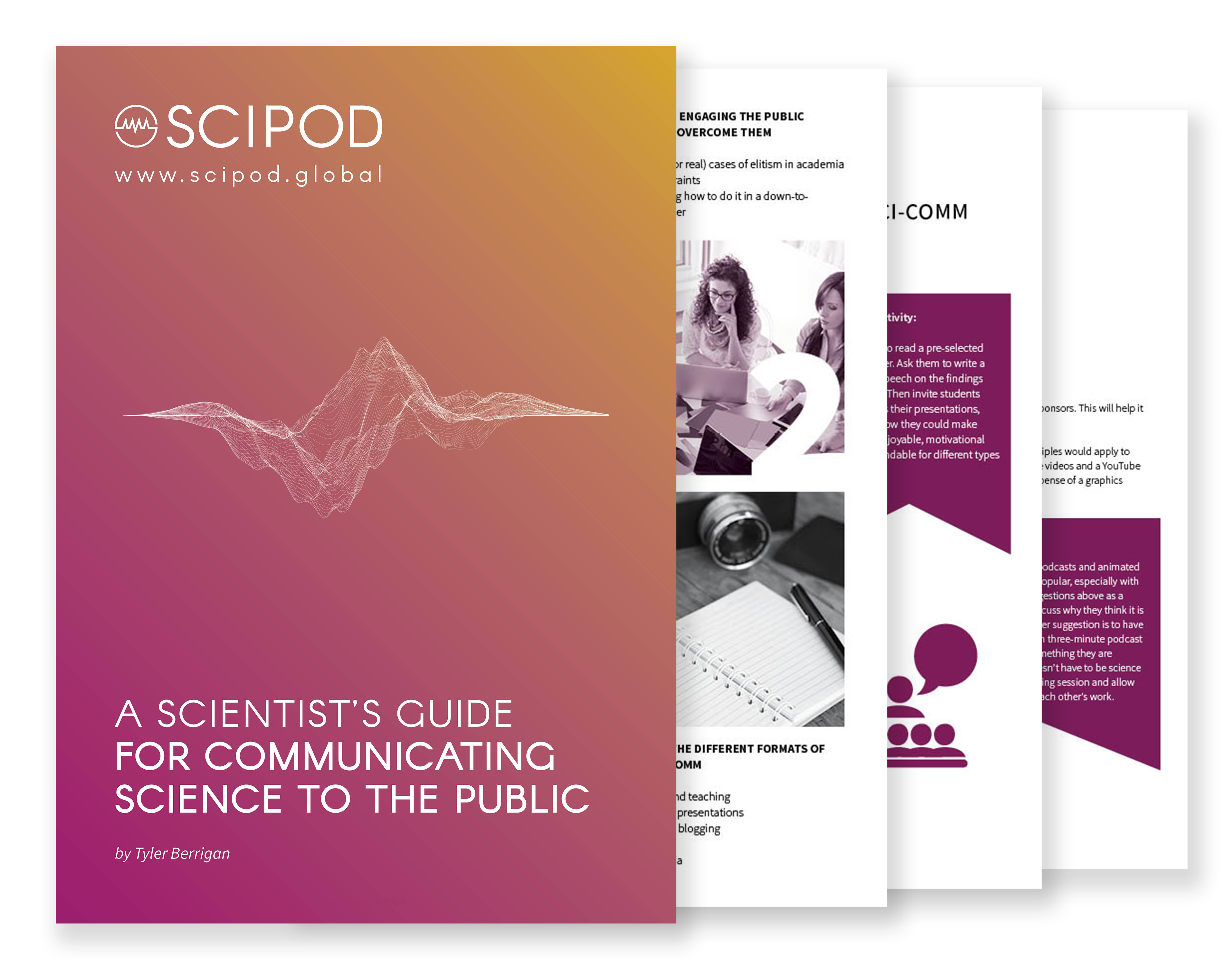Welcome to SciComm Radio
An exclusive interview series with leading scientists and science communicators
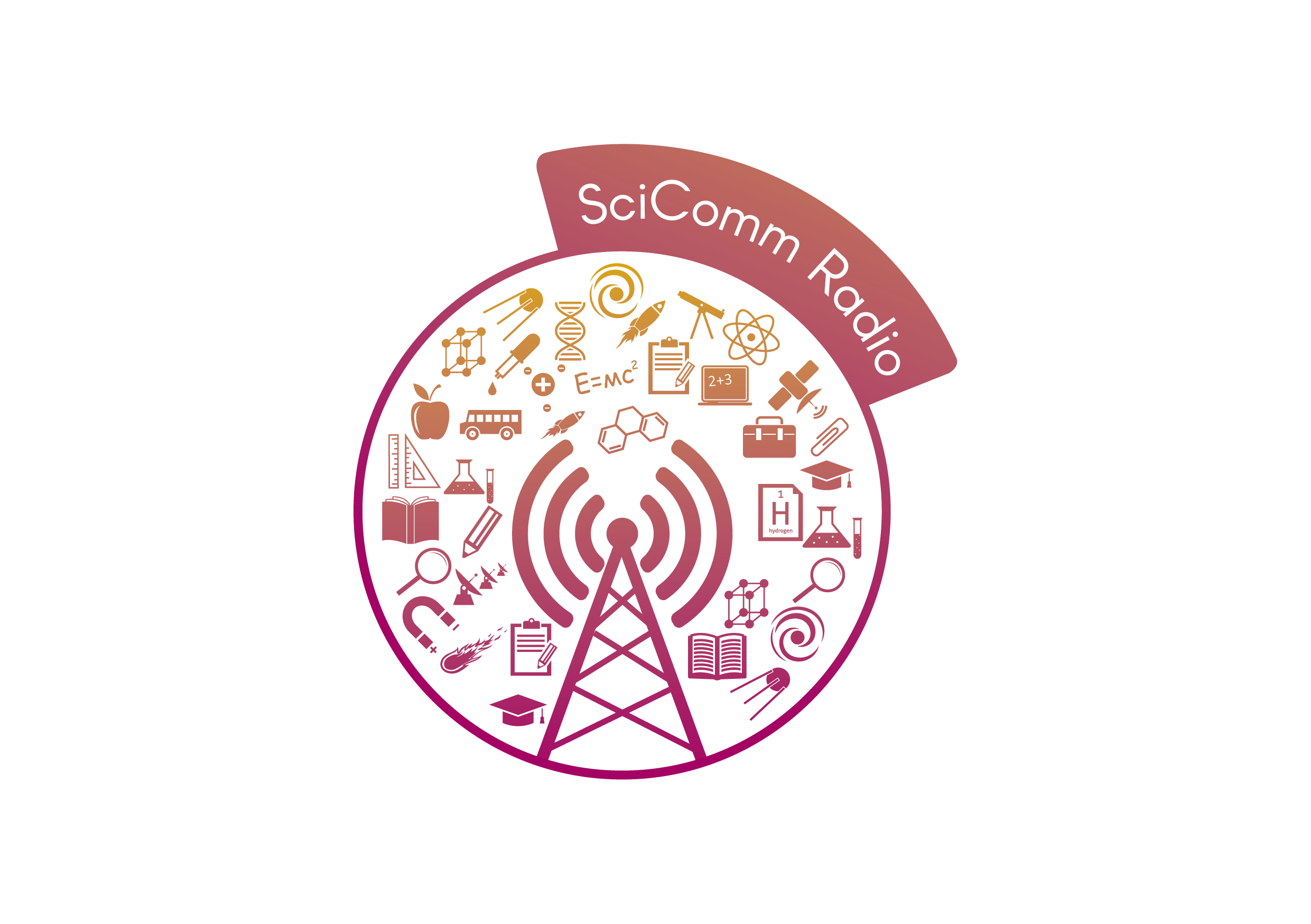
Click Below To Listen To A SciPod Radio Episode
Building the STEM Students We Need – University of San Diego
Building the STEM Students We Need – University of San Diego
Original Article Reference
https://doi.org/10.33548/SCIENTIA475
Share Episode
About this episode
Despite recent efforts to promote diversity in STEM education and professional environments, some ethnic groups remain highly underrepresented in STEM fields, including the Hispanic/LatinX community. To tackle this underrepresentation, researchers at the University of San Diego have created a multi-dimensional program funded by the National Science Foundation called STEMWoW, which is designed to promote and sustain interest in STEM disciplines among middle school students from underserved communities.
This work is licensed under a Creative Commons Attribution 4.0 International License. 
What does this mean?
Share: You can copy and redistribute the material in any medium or format
Adapt: You can change, and build upon the material for any purpose, even commercially.
Credit: You must give appropriate credit, provide a link to the license, and indicate if changes were made.
Related episodes
Increase the impact of your research
• Good science communication encourages everyday people to be scientifically literate so that they can analyse the integrity and legitimacy of information.
• Good science communication encourages people into STEM-related fields of study and employment.
• Good public science communication fosters a community around research that includes both members of the public, policymakers and scientists.
• In a recent survey, 75% of people suggested they would prefer to listen to an interesting story than read it.
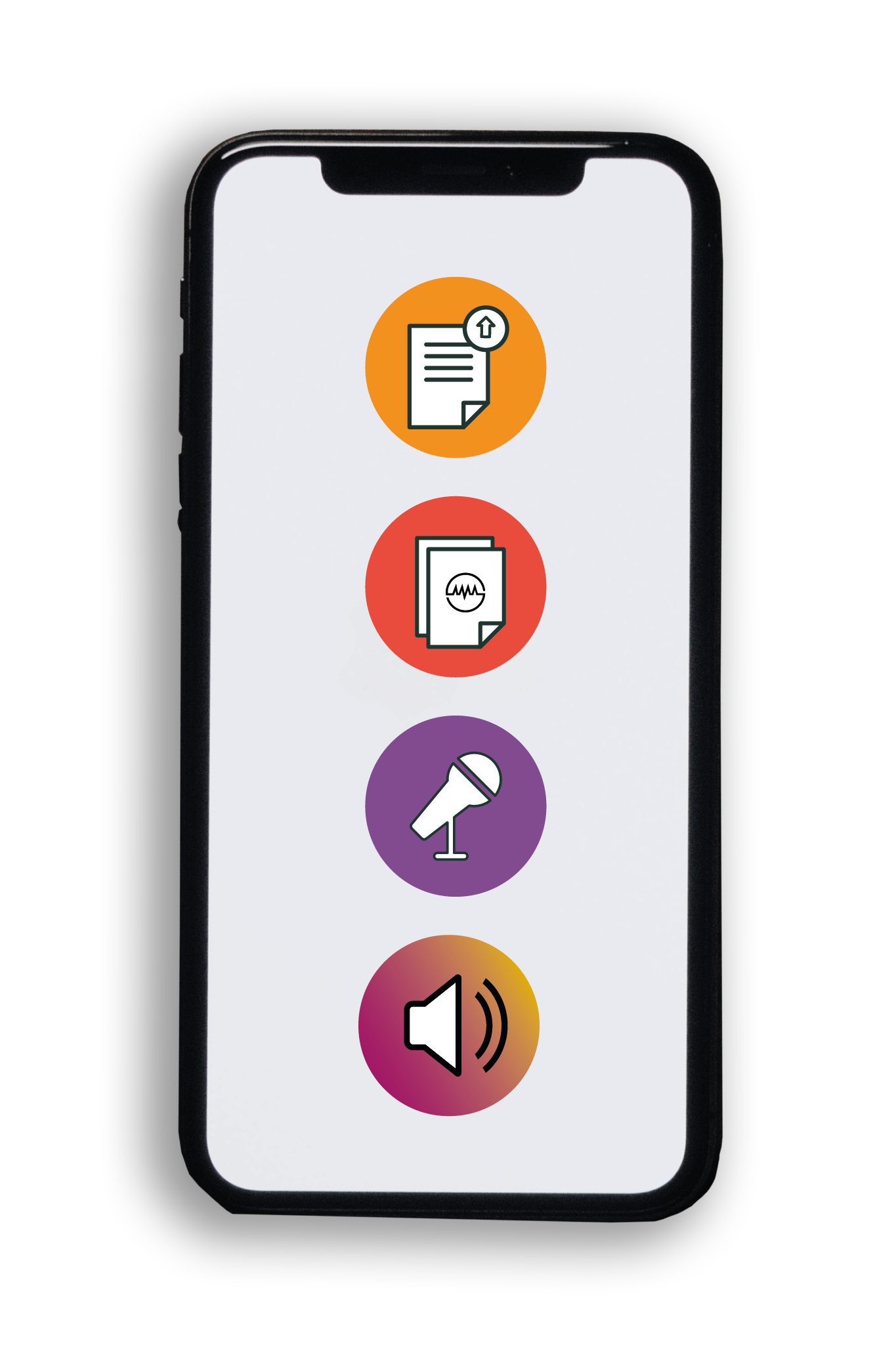
Step 1 Upload your science paper
Step 2 SciPod script written
Step 3 Voice audio recorded
Step 4 SciPod published
TunnelBerries: Enhancing The Sustainability Of Berry Production
TunnelBerries: Enhancing The Sustainability Of Berry Production
Original Article Reference
https://doi.org/10.33548/SCIENTIA470
Share Episode
About this episode
In certain areas of the US, local berry growers face difficulties in meeting the growing customer demand for high-quality berries, while also managing pests in sustainable ways. Aware of these challenges, researchers from different universities, including Michigan State, Penn State and Cornell Universities have been collaborating on a project called TunnelBerries. Their aim is to conduct research related to berry growing and provide berry crop producers with useful information, paving the way towards the use of forward-looking practices.
This work is licensed under a Creative Commons Attribution 4.0 International License. 
What does this mean?
Share: You can copy and redistribute the material in any medium or format
Adapt: You can change, and build upon the material for any purpose, even commercially.
Credit: You must give appropriate credit, provide a link to the license, and indicate if changes were made.
Related episodes
Increase the impact of your research
• Good science communication encourages everyday people to be scientifically literate so that they can analyse the integrity and legitimacy of information.
• Good science communication encourages people into STEM-related fields of study and employment.
• Good public science communication fosters a community around research that includes both members of the public, policymakers and scientists.
• In a recent survey, 75% of people suggested they would prefer to listen to an interesting story than read it.

Step 1 Upload your science paper
Step 2 SciPod script written
Step 3 Voice audio recorded
Step 4 SciPod published
Andy Ridgway | The Evolution Of Science Journalism
SciPod Radio
About this episode
This week we speak with Andy Ridgway, an award-winning journalist, he has spent nearly 20 years in the profession, most recently as Deputy Editor of BBC Focus and then launch Editor of Science Uncovered. We discuss the impact the internet, and notably, social media is having on the science journalism world. What’s changed, and importantly, what hasn’t.
Contact
For further information, you can connect with Andy Ridgway on Andy.Ridgway@uwe.ac.uk
This work is licensed under a Creative Commons Attribution 4.0 International License. 
What does this mean?
Share: You can copy and redistribute the material in any medium or format
Adapt: You can change, and build upon the material for any purpose, even commercially.
Credit: You must give appropriate credit, provide a link to the license, and indicate if changes were made.
Increase the impact of your research!
More episodes
Innovations in Functional Brain Imaging to Improve Neurosurgery – Dr Jun Hua, Johns Hopkins University
Innovations in Functional Brain Imaging to Improve Neurosurgery – Dr Jun Hua, Johns Hopkins University
Original Article Reference
https://doi.org/10.33548/SCIENTIA477
Share Episode
About this episode
Dr Jun Hua, Associate Professor at the F. M. Kirby Research Center for Functional Brain Imaging at the Kennedy Krieger Institute and Johns Hopkins University, USA, leads a team focused on developing novel magnetic resonance imaging (MRI) technologies for imaging the structure and function of the brain. Recently, they have been pioneering the development of new MRI techniques that can be used to improve pre-surgical planning for neurological patients and optimise patient outcomes.
This work is licensed under a Creative Commons Attribution 4.0 International License. 
What does this mean?
Share: You can copy and redistribute the material in any medium or format
Adapt: You can change, and build upon the material for any purpose, even commercially.
Credit: You must give appropriate credit, provide a link to the license, and indicate if changes were made.
Related episodes
Increase the impact of your research
• Good science communication encourages everyday people to be scientifically literate so that they can analyse the integrity and legitimacy of information.
• Good science communication encourages people into STEM-related fields of study and employment.
• Good public science communication fosters a community around research that includes both members of the public, policymakers and scientists.
• In a recent survey, 75% of people suggested they would prefer to listen to an interesting story than read it.

Step 1 Upload your science paper
Step 2 SciPod script written
Step 3 Voice audio recorded
Step 4 SciPod published
How Memories Are Made And Lost In The Brain – Professor Don Kulasiri, Lincoln University
How Memories Are Made And Lost In The Brain – Professor Don Kulasiri, Lincoln University
Original Article Reference
This SciPod is a summary of the papers ‘Modelling the dynamics of CaMKII–NMDAR complex related to memory formation in synapses: The possible roles of threonine 286 autophosphorylation of CaMKII in long term potentiation’, published in the Journal of Theoretical Biology, DOI:10.1016/j.jtbi.2014.11.001; ‘Modelling bidirectional modulations in synaptic plasticity: A biochemical pathway model to understand the emergence of long term potentiation (LTP) and long term depression (LTD)’, published in the Journal of Theoretical Biology, DOI:10.1016/j.jtbi.2016.05.015; and ‘Computational investigation of Amyloid-β-induced location- and subunit-specific disturbances of NMDAR at hippocampal dendritic spine in Alzheimer’s disease’, published in the journal PLOS ONE, DOI:10.1371/journal.pone.0182743.
Share Episode
About this episode
Our brain forms long-term memories and stores information through synaptic plasticity, the ability of the connections between neurons to be strengthened or weakened over time. However, the exact methods through which synaptic plasticity is achieved by the brain remain largely unknown in the scientific community. Professor Don Kulasiri at Lincoln University, New Zealand, is using a mathematical modelling approach to shed light into this process. His findings are providing molecular insights into how memories can be strengthened or lost.
This work is licensed under a Creative Commons Attribution 4.0 International License. 
What does this mean?
Share: You can copy and redistribute the material in any medium or format
Adapt: You can change, and build upon the material for any purpose, even commercially.
Credit: You must give appropriate credit, provide a link to the license, and indicate if changes were made.
Related episodes
Increase the impact of your research

Step 1 Upload your science paper
Step 2 SciPod script written
Step 3 Voice audio recorded
Step 4 SciPod published
Profiting from Disinformation: The Case of Genetically Modified Organisms
Profiting from Disinformation: The Case of Genetically Modified Organisms
Original Article Reference
This SciPod is a summary of the paper ‘Monetizing disinformation in the attention economy: the case of genetically modified organisms (GMOs)’, from the European Management Journal.
https://doi.org/10.1016/j.emj.2019.11.002
Conflict of interest and funding disclosures
Over the development, execution, and publication of this study, all authors were employed by Bayer Crop Science. Thus, the work was funded by Bayer Crop Science.The production of this SciPod was commissioned by Bayer CropScience. As of 2020, author Ryan Butner is employed by Pacific Northwest National Laboratory (PNNL).
Share Episode
About this episode
As people are now spending a substantial amount of time online, traditional businesses and other vendors try to attract new customers by gaining traction on social media platforms, capturing the attention of users in a variety of ways. This is often achieved by disseminating compelling information, which is not always true or reliable. In a recent study, Dr Camille Ryan and her colleagues at Bayer Crop Science have taken a closer look at the monetisation of disinformation, focusing on the specific case of genetically modified organisms (aka GMOs).
This work is licensed under a Creative Commons Attribution 4.0 International License. 
What does this mean?
Share: You can copy and redistribute the material in any medium or format
Adapt: You can change, and build upon the material for any purpose, even commercially.
Credit: You must give appropriate credit, provide a link to the license, and indicate if changes were made.
Related episodes
Increase the impact of your research
• Good science communication encourages everyday people to be scientifically literate so that they can analyse the integrity and legitimacy of information.
• Good science communication encourages people into STEM-related fields of study and employment.
• Good public science communication fosters a community around research that includes both members of the public, policymakers and scientists.
• In a recent survey, 75% of people suggested they would prefer to listen to an interesting story than read it.

Step 1 Upload your science paper
Step 2 SciPod script written
Step 3 Voice audio recorded
Step 4 SciPod published
Targeting the Brain in Type 2 Diabetes: Therapeutics to Induce Remission – Dr Jarrad Scarlett, University of Washington
Targeting the Brain in Type 2 Diabetes: Therapeutics to Induce Remission – Dr Jarrad Scarlett, University of Washington
Original Article Reference
https://doi.org/10.33548/SCIENTIA463
Share Episode
About this episode
Type 2 diabetes (T2D) is among the most impactful and costly biomedical challenges confronting society. Current treatment regimens for T2D rely upon daily drug dosing and frequent glucose monitoring to normalise blood glucose levels. However, these medications can only delay disease progression and frequently have undesired side effects including hypoglycaemia and weight gain. Growing evidence supports a key role for the brain in glucose homeostasis and diabetes pathogenesis. Dr Jarrad Scarlett and his research team at the University of Washington and Seattle Children’s Hospital are working on the development of novel pharmaceuticals to target the brain to induce sustained remission of T2D.
This work is licensed under a Creative Commons Attribution 4.0 International License. 
What does this mean?
Share: You can copy and redistribute the material in any medium or format
Adapt: You can change, and build upon the material for any purpose, even commercially.
Credit: You must give appropriate credit, provide a link to the license, and indicate if changes were made.
Related episodes
Increase the impact of your research
• Good science communication encourages everyday people to be scientifically literate so that they can analyse the integrity and legitimacy of information.
• Good science communication encourages people into STEM-related fields of study and employment.
• Good public science communication fosters a community around research that includes both members of the public, policymakers and scientists.
• In a recent survey, 75% of people suggested they would prefer to listen to an interesting story than read it.

Step 1 Upload your science paper
Step 2 SciPod script written
Step 3 Voice audio recorded
Step 4 SciPod published
Identifying Ways to Make the BEST Program Even Better – Professor Stephanie Wengert Watts, Michigan State University
Identifying Ways to Make the BEST Program Even Better – Professor Stephanie Wengert Watts, Michigan State University
Original Article Reference
This SciPod is a summary of the paper ‘Faculty perceptions and knowledge of career development of trainees in biomedical science: what do we (think we) know?’, published by PLoS ONE, https://doi.org/10.1371/journal.pone.0210189.
Share Episode
About this episode
Broadening Experiences in Scientific Training – or ‘BEST’ – is a program that aims to help biomedical students to explore and pursue expanded career options beyond traditional academic positions. While the program has been in place for a few years, the views of participating faculty members on the value of BEST’s career development initiatives had never been collected. To fill this gap, Dr Stephanie Watts at Michigan State University and her collaborators asked faculty members at seven institutions participating in the BEST program to answer surveys and share their perceptions. By shedding light on the program’s strengths and weaknesses, the team’s findings will help to improve BEST initiatives, greatly benefitting the participating students.
This work is licensed under a Creative Commons Attribution 4.0 International License. 
What does this mean?
Share: You can copy and redistribute the material in any medium or format
Adapt: You can change, and build upon the material for any purpose, even commercially.
Credit: You must give appropriate credit, provide a link to the license, and indicate if changes were made.
Related episodes
Increase the impact of your research
• Good science communication encourages everyday people to be scientifically literate so that they can analyse the integrity and legitimacy of information.
• Good science communication encourages people into STEM-related fields of study and employment.
• Good public science communication fosters a community around research that includes both members of the public, policymakers and scientists.
• In a recent survey, 75% of people suggested they would prefer to listen to an interesting story than read it.

Step 1 Upload your science paper
Step 2 SciPod script written
Step 3 Voice audio recorded
Step 4 SciPod published
From Machine Learning To Machine Understanding – Dr Yan M Yufik
From Machine Learning To Machine Understanding – Dr Yan M Yufik
Original Article Reference
https://doi.org/10.33548/SCIENTIA465
Share Episode
About this episode
Despite dramatic advances in neuroscience and biology in the 20th and 21st centuries, our understanding of the brain remains very limited. Dr Yan M Yufik, Head at Virtual Structures Research Inc, USA, is a physicist and cognitive scientist who has spent over 20 years combining experimental findings and theoretical concepts in domains as diverse as neuroscience and thermodynamics to form a theory of the brain. His focus has been on elucidating the mechanisms underlying human understanding and applying the results to the design of machines that can not only learn but understand what they are learning.
This work is licensed under a Creative Commons Attribution 4.0 International License.  What does this mean? Share: You can copy and redistribute the material in any medium or format Adapt: You can change, and build upon the material for any purpose, even commercially. Credit: You must give appropriate credit, provide a link to the license, and indicate if changes were made.
What does this mean? Share: You can copy and redistribute the material in any medium or format Adapt: You can change, and build upon the material for any purpose, even commercially. Credit: You must give appropriate credit, provide a link to the license, and indicate if changes were made.
Related episodes
Increase the impact of your research
• Good science communication encourages everyday people to be scientifically literate so that they can analyse the integrity and legitimacy of information.
• Good science communication encourages people into STEM-related fields of study and employment.
• Good public science communication fosters a community around research that includes both members of the public, policymakers and scientists.
• In a recent survey, 75% of people suggested they would prefer to listen to an interesting story than read it.

Step 1 Upload your science paper
Step 2 SciPod script written
Step 3 Voice audio recorded
Step 4 SciPod published
ADBCAP A Human Approach To Improving Biosecurity
ADBCAP A Human Approach To Improving Biosecurity
Original Article Reference
https://doi.org/10.33548/SCIENTIA453
Share Episode
About this episode
This work is licensed under a Creative Commons Attribution 4.0 International License.  What does this mean? Share: You can copy and redistribute the material in any medium or format Adapt: You can change, and build upon the material for any purpose, even commercially. Credit: You must give appropriate credit, provide a link to the license, and indicate if changes were made.
What does this mean? Share: You can copy and redistribute the material in any medium or format Adapt: You can change, and build upon the material for any purpose, even commercially. Credit: You must give appropriate credit, provide a link to the license, and indicate if changes were made.
Related episodes
Increase the impact of your research
• Good science communication encourages everyday people to be scientifically literate so that they can analyse the integrity and legitimacy of information.
• Good science communication encourages people into STEM-related fields of study and employment.
• Good public science communication fosters a community around research that includes both members of the public, policymakers and scientists.
• In a recent survey, 75% of people suggested they would prefer to listen to an interesting story than read it.

Step 1 Upload your science paper
Step 2 SciPod script written
Step 3 Voice audio recorded
Step 4 SciPod published
Improving Mentoring Relationships in Science: Mentors Need Mentors – Dr Christine Pfund
Improving Mentoring Relationships in Science: Mentors Need Mentors – Dr Christine Pfund
Original Article Reference
https://doi.org/10.33548/SCIENTIA458
Share Episode
About this episode
This work is licensed under a Creative Commons Attribution 4.0 International License.  What does this mean? Share: You can copy and redistribute the material in any medium or format Adapt: You can change, and build upon the material for any purpose, even commercially. Credit: You must give appropriate credit, provide a link to the license, and indicate if changes were made.
What does this mean? Share: You can copy and redistribute the material in any medium or format Adapt: You can change, and build upon the material for any purpose, even commercially. Credit: You must give appropriate credit, provide a link to the license, and indicate if changes were made.
Related episodes
Increase the impact of your research
• Good science communication encourages everyday people to be scientifically literate so that they can analyse the integrity and legitimacy of information.
• Good science communication encourages people into STEM-related fields of study and employment.
• Good public science communication fosters a community around research that includes both members of the public, policymakers and scientists.
• In a recent survey, 75% of people suggested they would prefer to listen to an interesting story than read it.

Step 1 Upload your science paper
Step 2 SciPod script written
Step 3 Voice audio recorded
Step 4 SciPod published
Artificial Intelligence Predicts The Worsening Of Chronic Kidney Disease – Professor Eiichiro Kanda
Artificial Intelligence Predicts The Worsening Of Chronic Kidney Disease – Professor Eiichiro Kanda
Original Article Reference
This SciPod is a summary of the paper ‘Identifying progressive CKD from healthy population using Bayesian network and artificial intelligence: A worksite-based cohort study’, published in the open access journal Scientific Reports. https://doi.org/10.1038/s41598-019-41663-7.
Share Episode
About this episode
 What does this mean? Share: You can copy and redistribute the material in any medium or format Adapt: You can change, and build upon the material for any purpose, even commercially. Credit: You must give appropriate credit, provide a link to the license, and indicate if changes were made.
What does this mean? Share: You can copy and redistribute the material in any medium or format Adapt: You can change, and build upon the material for any purpose, even commercially. Credit: You must give appropriate credit, provide a link to the license, and indicate if changes were made.Related episodes
Increase the impact of your research
• Good science communication encourages everyday people to be scientifically literate so that they can analyse the integrity and legitimacy of information.
• Good science communication encourages people into STEM-related fields of study and employment.
• Good public science communication fosters a community around research that includes both members of the public, policymakers and scientists.
• In a recent survey, 75% of people suggested they would prefer to listen to an interesting story than read it.

Step 1 Upload your science paper
Step 2 SciPod script written
Step 3 Voice audio recorded
Step 4 SciPod published
A Deep Learning Model to Predict Student Dropout – Dr Naif Radi Aljohani, King Abdulaziz University Jeddah
A Deep Learning Model to Predict Student Dropout – Dr Naif Radi Aljohani, King Abdulaziz University Jeddah
Original Article Reference
This SciPod is a summary of the paper ‘Virtual learning environment to predict withdrawal by leveraging deep learning’, from Wiley’s International Journal of Intelligent Systems. https://doi.org/10.1002/int.22129
Share Episode
About this episode
Identifying students who are at risk of withdrawing from higher education is of key importance, as it allows educators to devise and implement intervention strategies that could support students in completing their studies. With this in mind, Dr Naif Radi Aljohani and his colleagues at King Abdulaziz University in Saudi Arabia have recently devised a technique that could help to predict early dropout from university courses, by analysing data related to student engagement on online learning platforms.
This work is licensed under a Creative Commons Attribution 4.0 International License. 
What does this mean?
Share: You can copy and redistribute the material in any medium
or format
Adapt: You can change, and build upon the material for any
purpose, even commercially.
Credit: You must give appropriate credit, provide a link to the
license, and indicate if changes were made.
Related episodes
Increase the impact of your research
• Good science communication encourages everyday people to be scientifically literate so that they can analyse the integrity and legitimacy of information.
• Good science communication encourages people into STEM-related fields of study and employment.
• Good public science communication fosters a community around research that includes both members of the public, policymakers and scientists.
• In a recent survey, 75% of people suggested they would prefer to listen to an interesting story than read it.

Upload your science paper
Step 2
SciPod script written
Step 3
Voice audio recorded
Step 4
SciPod published
The Benefits of an Organic Diet on Oxidative Stress and Inflammation in Children – Dr Konstantinos Makris, Cyprus University of Technology
The Benefits of an Organic Diet on Oxidative Stress and Inflammation in Children – Dr Konstantinos Makris, Cyprus University of Technology
Original Article Reference
This SciPod is a summary of the paper ‘A cluster-randomized crossover trial of organic diet impact on biomarkers of exposure to pesticides and biomarkers of oxidative stress/inflammation in primary school children’ published in the open access journal PLOS ONE: https://doi.org/10.1371/journal.pone.0219420
Share Episode
About this episode
Lifestyle factors and behavioural changes, such as diet modifications, are gaining interest as methods to modify or even prevent the global progression of chronic diseases, such as heart conditions and type 2 diabetes. Dr Konstantinos Makris (con-stan-teen-os Mah-kris), at the Cyprus International Institute for Environmental and Public Health within the Cyprus University of Technology, and his colleagues conducted a clinical trial to investigate the benefits of eating an organic diet in school children, with findings making an important contribution to this emergent field.
This work is licensed under a Creative Commons Attribution 4.0 International License. 
What does this mean?
Share: You can copy and redistribute the material in any medium
or format
Adapt: You can change, and build upon the material for any
purpose, even commercially.
Credit: You must give appropriate credit, provide a link to the
license, and indicate if changes were made.
Related episodes
Increase the impact of your research
• Good science communication encourages everyday people to be scientifically literate so that they can analyse the integrity and legitimacy of information.
• Good science communication encourages people into STEM-related fields of study and employment.
• Good public science communication fosters a community around research that includes both members of the public, policymakers and scientists.
• In a recent survey, 75% of people suggested they would prefer to listen to an interesting story than read it.

Upload your science paper
Step 2
SciPod script written
Step 3
Voice audio recorded
Step 4
SciPod published
Flood Prediction Using Remote Sensing Technology – Dr Guy J – P Schumann
Flood Prediction Using Remote Sensing Technology – Dr Guy J – P Schumann
Original Article Reference
https://doi.org/10.33548/SCIENTIA444
Share Episode
About this episode
This work is licensed under a Creative Commons Attribution 4.0 International License. 
What does this mean?
Share: You can copy and redistribute the material in any medium
or format
Adapt: You can change, and build upon the material for any
purpose, even commercially.
Credit: You must give appropriate credit, provide a link to the
license, and indicate if changes were made.
Related episodes
Increase the impact of your research
• Good science communication encourages everyday people to be scientifically literate so that they can analyse the integrity and legitimacy of information.
• Good science communication encourages people into STEM-related fields of study and employment.
• Good public science communication fosters a community around research that includes both members of the public, policymakers and scientists.
• In a recent survey, 75% of people suggested they would prefer to listen to an interesting story than read it.

Upload your science paper
Step 2
SciPod script written
Step 3
Voice audio recorded
Step 4
SciPod published
Creating A Circular Economy For Sustainable Metal Manufacturing – Andrew LaTour
Creating A Circular Economy For Sustainable Metal Manufacturing – Andrew LaTour
Original Article Reference
https://doi.org/10.33548/SCIENTIA452
Share Episode
About this episode
This work is licensed under a Creative Commons Attribution 4.0 International License. 
What does this mean?
Share: You can copy and redistribute the material in any medium
or format
Adapt: You can change, and build upon the material for any
purpose, even commercially.
Credit: You must give appropriate credit, provide a link to the
license, and indicate if changes were made.
Related episodes
Increase the impact of your research
• Good science communication encourages everyday people to be scientifically literate so that they can analyse the integrity and legitimacy of information.
• Good science communication encourages people into STEM-related fields of study and employment.
• Good public science communication fosters a community around research that includes both members of the public, policymakers and scientists.
• In a recent survey, 75% of people suggested they would prefer to listen to an interesting story than read it.

Upload your science paper
Step 2
SciPod script written
Step 3
Voice audio recorded
Step 4
SciPod published
Are Amyloid Peptides Potential Therapeutics for Sepsis?
Are Amyloid Peptides Potential Therapeutics for Sepsis?
Original Article Reference
This SciPod is a summary of the paper ‘An amyloidogenic hexapeptide derived from amylin attenuates inflammation and acute lung injury in murine sepsis’ published in the open access journal PLOS ONE:
https://journals.plos.org/plosone/article?id=10.1371/journal.pone.0199206
Share Episode
About this episode
Amyloids are aggregates of polymerised proteins. The polymerised proteins do not fold as they should and adopt shapes that enable multiple copies to stick together. In humans, these clusters of proteins form fibrils and the presence of these amyloid protein clusters are associated with disease pathologies. In a recent study, Dr Sidharth Mahapatra and colleagues at Stanford University assessed their hypothesis, that, contrary to much of the work in this area, in some cases, amyloids may be beneficial in treating inflammation caused by serious, life-threatening conditions, such as sepsis.
This work is licensed under a Creative Commons Attribution 4.0 International License. 
What does this mean?
Share: You can copy and redistribute the material in any medium
or format
Adapt: You can change, and build upon the material for any
purpose, even commercially.
Credit: You must give appropriate credit, provide a link to the
license, and indicate if changes were made.
Related episodes
Increase the impact of your research
• Good science communication encourages everyday people to be scientifically literate so that they can analyse the integrity and legitimacy of information.
• Good science communication encourages people into STEM-related fields of study and employment.
• Good public science communication fosters a community around research that includes both members of the public, policymakers and scientists.
• In a recent survey, 75% of people suggested they would prefer to listen to an interesting story than read it.

Upload your science paper
Step 2
SciPod script written
Step 3
Voice audio recorded
Step 4
SciPod published
Illuminating Insect Chemical Ecology for Effective Pest Control – Dr Robert K. Vander Meer, USDA
Illuminating Insect Chemical Ecology for Effective Pest Control – Dr Robert K. Vander Meer, USDA
Original Article Reference
https://doi.org/10.33548/SCIENTIA440
Share Episode
About this episode
This work is licensed under a Creative Commons Attribution 4.0 International License. 
What does this mean?
Share: You can copy and redistribute the material in any medium
or format
Adapt: You can change, and build upon the material for any
purpose, even commercially.
Credit: You must give appropriate credit, provide a link to the
license, and indicate if changes were made.
Related episodes
Increase the impact of your research
• Good science communication encourages everyday people to be scientifically literate so that they can analyse the integrity and legitimacy of information.
• Good science communication encourages people into STEM-related fields of study and employment.
• Good public science communication fosters a community around research that includes both members of the public, policymakers and scientists.
• In a recent survey, 75% of people suggested they would prefer to listen to an interesting story than read it.

Upload your science paper
Step 2
SciPod script written
Step 3
Voice audio recorded
Step 4
SciPod published
Understanding Cancer Development in Humans and Their Companion Animals – Dr Jaime Modiano, University of Minnesota
Understanding Cancer Development in Humans and Their Companion Animals – Dr Jaime Modiano, University of Minnesota
Original Article Reference
https://doi.org/10.33548/SCIENTIA425
Share Episode
About this episode
Dogs are renowned for their status as man’s best friend. Based first at the University of Colorado and now at the University of Minnesota in the Twin Cities, Dr Jaime Modiano and his team have spent the last 25 years trying to understand how cancer develops at a basic level, aiming to use this knowledge to improve the health and wellbeing of both humans and their companion animals.
This work is licensed under a Creative Commons Attribution 4.0 International License. 
What does this mean?
Share: You can copy and redistribute the material in any medium
or format
Adapt: You can change, and build upon the material for any
purpose, even commercially.
Credit: You must give appropriate credit, provide a link to the
license, and indicate if changes were made.
Related episodes
Increase the impact of your research
• Good science communication encourages everyday people to be scientifically literate so that they can analyse the integrity and legitimacy of information.
• Good science communication encourages people into STEM-related fields of study and employment.
• Good public science communication fosters a community around research that includes both members of the public, policymakers and scientists.
• In a recent survey, 75% of people suggested they would prefer to listen to an interesting story than read it.

Upload your science paper
Step 2
SciPod script written
Step 3
Voice audio recorded
Step 4
SciPod published
Driving Forward Training and Research in Psychiatry – Dr Susan Voglmaier, University of California
Driving Forward Training and Research in Psychiatry – Dr Susan Voglmaier, University of California
Original Article Reference
https://doi.org/10.33548/SCIENTIA426
Share Episode
About this episode
This work is licensed under a Creative Commons Attribution 4.0 International License. 
What does this mean?
Share: You can copy and redistribute the material in any medium
or format
Adapt: You can change, and build upon the material for any
purpose, even commercially.
Credit: You must give appropriate credit, provide a link to the
license, and indicate if changes were made.
Related episodes
Increase the impact of your research
• Good science communication encourages everyday people to be scientifically literate so that they can analyse the integrity and legitimacy of information.
• Good science communication encourages people into STEM-related fields of study and employment.
• Good public science communication fosters a community around research that includes both members of the public, policymakers and scientists.
• In a recent survey, 75% of people suggested they would prefer to listen to an interesting story than read it.

Upload your science paper
Step 2
SciPod script written
Step 3
Voice audio recorded
Step 4
SciPod published
Towards a Brighter Future: How Zietchick Research Institute Plans to Transform Treatment for Retinal Disease – Dr Tammy Movsas
Towards a Brighter Future: How Zietchick Research Institute Plans to Transform Treatment for Retinal Disease – Dr Tammy Movsas
Original Article Reference
https://doi.org/10.33548/SCIENTIA442
Share Episode
About this episode
This work is licensed under a Creative Commons Attribution 4.0 International License. 
What does this mean?
Share: You can copy and redistribute the material in any medium
or format
Adapt: You can change, and build upon the material for any
purpose, even commercially.
Credit: You must give appropriate credit, provide a link to the
license, and indicate if changes were made.
Related episodes
Increase the impact of your research
• Good science communication encourages everyday people to be scientifically literate so that they can analyse the integrity and legitimacy of information.
• Good science communication encourages people into STEM-related fields of study and employment.
• Good public science communication fosters a community around research that includes both members of the public, policymakers and scientists.
• In a recent survey, 75% of people suggested they would prefer to listen to an interesting story than read it.

Upload your science paper
Step 2
SciPod script written
Step 3
Voice audio recorded
Step 4
SciPod published
Going with the Flow: New methods for Treating Cardiovascular Disease – Dr York Hsiang, University of British Columbia Vancouver
Going with the Flow: New methods for Treating Cardiovascular Disease – Dr York Hsiang, University of British Columbia Vancouver
Original Article Reference
https://doi.org/10.33548/SCIENTIA427
Share Episode
About this episode
This work is licensed under a Creative Commons Attribution 4.0 International License. 
What does this mean?
Share: You can copy and redistribute the material in any medium
or format
Adapt: You can change, and build upon the material for any
purpose, even commercially.
Credit: You must give appropriate credit, provide a link to the
license, and indicate if changes were made.
Related episodes
Increase the impact of your research
• Good science communication encourages everyday people to be scientifically literate so that they can analyse the integrity and legitimacy of information.
• Good science communication encourages people into STEM-related fields of study and employment.
• Good public science communication fosters a community around research that includes both members of the public, policymakers and scientists.
• In a recent survey, 75% of people suggested they would prefer to listen to an interesting story than read it.

Upload your science paper
Step 2
SciPod script written
Step 3
Voice audio recorded
Step 4
SciPod published
CART: Pointing the Way to Reliable Robotic Assistants- Dr Paul Robertson, Dynamic Object Language Labs Inc Lexington
CART: Pointing the Way to Reliable Robotic Assistants- Dr Paul Robertson, Dynamic Object Language Labs Inc Lexington
Original Article Reference
https://doi.org/10.33548/SCIENTIA432
Share Episode
About this episode
This work is licensed under a Creative Commons Attribution 4.0 International License. 
What does this mean?
Share: You can copy and redistribute the material in any medium
or format
Adapt: You can change, and build upon the material for any
purpose, even commercially.
Credit: You must give appropriate credit, provide a link to the
license, and indicate if changes were made.
Related episodes
Increase the impact of your research
• Good science communication encourages everyday people to be scientifically literate so that they can analyse the integrity and legitimacy of information.
• Good science communication encourages people into STEM-related fields of study and employment.
• Good public science communication fosters a community around research that includes both members of the public, policymakers and scientists.
• In a recent survey, 75% of people suggested they would prefer to listen to an interesting story than read it.

Upload your science paper
Step 2
SciPod script written
Step 3
Voice audio recorded
Step 4
SciPod published
Soluble Dietary Fibre and Type 2 Diabetes – Mechanisms of Action and Food Supplementation, Professor Douglas Goff, University of Guelph, Ontario
Soluble Dietary Fibre and Type 2 Diabetes – Mechanisms of Action and Food Supplementation, Professor Douglas Goff, University of Guelph, Ontario
Original Article Reference
https://doi.org/10.33548/SCIENTIA413
Share Episode
About this episode
This work is licensed under a Creative Commons Attribution 4.0 International License. 
What does this mean?
Share: You can copy and redistribute the material in any medium
or format
Adapt: You can change, and build upon the material for any
purpose, even commercially.
Credit: You must give appropriate credit, provide a link to the
license, and indicate if changes were made.
Related episodes
Increase the impact of your research
• Good science communication encourages everyday people to be scientifically literate so that they can analyse the integrity and legitimacy of information.
• Good science communication encourages people into STEM-related fields of study and employment.
• Good public science communication fosters a community around research that includes both members of the public, policymakers and scientists.
• In a recent survey, 75% of people suggested they would prefer to listen to an interesting story than read it.

Upload your science paper
Step 2
SciPod script written
Step 3
Voice audio recorded
Step 4
SciPod published
The Next Generation Of Anticorrosion Technology – Jianguo Wang, AnCatt
The Next Generation Of Anticorrosion Technology – Jianguo Wang, AnCatt
Original Article Reference:
https://doi.org/10.33548/SCIENTIA387
Share Episode
About this episode
This work is licensed under a Creative Commons Attribution 4.0 International License. 
What does this mean?
Share: You can copy and redistribute the material in any medium
or format
Adapt: You can change, and build upon the material for any
purpose, even commercially.
Credit: You must give appropriate credit, provide a link to the
license, and indicate if changes were made.
Related episodes
Increase the impact of your research
• Good science communication encourages everyday people to be scientifically literate so that they can analyse the integrity and legitimacy of information.
• Good science communication encourages people into STEM-related fields of study and employment.
• Good public science communication fosters a community around research that includes both members of the public, policymakers and scientists.
• In a recent survey, 75% of people suggested they would prefer to listen to an interesting story than read it.

Upload your science paper
Step 2
SciPod script written
Step 3
Voice audio recorded
Step 4
SciPod published
Saving Primates We Need to Act Before It’s Too Late – Drs Alejandro Estrada and Paul A Garber
Saving Primates We Need to Act Before It’s Too Late – Drs Alejandro Estrada and Paul A Garber
Original article reference:
‘Impending extinction crisis of the world’s primates: Why primates matter’, from Science Advances
https://doi.org/10.1126/sciadv.1600946
Share Episode
About this episode
This work is licensed under a Creative Commons Attribution 4.0 International License. 
What does this mean?
Share: You can copy and redistribute the material in any medium
or format
Adapt: You can change, and build upon the material for any
purpose, even commercially.
Credit: You must give appropriate credit, provide a link to the
license, and indicate if changes were made.
Related episodes
Increase the impact of your research
• Good science communication encourages everyday people to be scientifically literate so that they can analyse the integrity and legitimacy of information.
• Good science communication encourages people into STEM-related fields of study and employment.
• Good public science communication fosters a community around research that includes both members of the public, policymakers and scientists.
• In a recent survey, 75% of people suggested they would prefer to listen to an interesting story than read it.

Upload your science paper
Step 2
SciPod script written
Step 3
Voice audio recorded
Step 4
SciPod published
Understanding Brain Function, Cognition, and Emotion in Psychopathology- Professor Christine Larson, University of Wisconsin-Milwaukee
Understanding Brain Function, Cognition, and Emotion in Psychopathology- Professor Christine Larson, University of Wisconsin-Milwaukee
Original Article Reference
https://doi.org/10.33548/SCIENTIA406
Share Episode
About this episode
This work is licensed under a Creative Commons Attribution 4.0 International License. 
What does this mean?
Share: You can copy and redistribute the material in any medium
or format
Adapt: You can change, and build upon the material for any
purpose, even commercially.
Credit: You must give appropriate credit, provide a link to the
license, and indicate if changes were made.
Related episodes
Increase the impact of your research
• Good science communication encourages everyday people to be scientifically literate so that they can analyse the integrity and legitimacy of information.
• Good science communication encourages people into STEM-related fields of study and employment.
• Good public science communication fosters a community around research that includes both members of the public, policymakers and scientists.
• In a recent survey, 75% of people suggested they would prefer to listen to an interesting story than read it.

Upload your science paper
Step 2
SciPod script written
Step 3
Voice audio recorded
Step 4
SciPod published
Predicting Mortality in Kidney Disease: A New Nutritional Risk Index – Professor Eiichiro Kanda, Kawasaki Medical School
Predicting Mortality in Kidney Disease: A New Nutritional Risk Index – Professor Eiichiro Kanda, Kawasaki Medical School
Original Article Reference
This SciPod is a summary of the paper ‘A new nutritional risk index for predicting mortality in hemodialysis patients: Nationwide cohort study’, published in PLOS ONE. https://doi.org/10.1371/journal.pone.0214524
Share Episode
About this episode
This work is licensed under a Creative Commons Attribution 4.0 International License. 
What does this mean?
Share: You can copy and redistribute the material in any medium
or format
Adapt: You can change, and build upon the material for any
purpose, even commercially.
Credit: You must give appropriate credit, provide a link to the
license, and indicate if changes were made.
Related episodes
Increase the impact of your research
• Good science communication encourages everyday people to be scientifically literate so that they can analyse the integrity and legitimacy of information.
• Good science communication encourages people into STEM-related fields of study and employment.
• Good public science communication fosters a community around research that includes both members of the public, policymakers and scientists.
• In a recent survey, 75% of people suggested they would prefer to listen to an interesting story than read it.

Upload your science paper
Step 2
SciPod script written
Step 3
Voice audio recorded
Step 4
SciPod published
Four Countries Hold the Key to Primate Conservation – Drs Alejandro Estrada and Paul A Garber
Four Countries Hold the Key to Primate Conservation – Drs Alejandro Estrada and Paul A Garber
Original article reference:
This SciPod is a summary of the papers ‘Agrobacterium-Mediated Transformation of Tree Fruit Crops: Methods, Progress, and Challenges’, from Frontiers in Plant Science, and ‘Production and characterization of transgenic Citrus plants carrying p35 anti-apoptotic gene’ from Scientia Horticulturae.
Share Episode
About this episode
This work is licensed under a Creative Commons Attribution 4.0 International License. 
What does this mean?
Share: You can copy and redistribute the material in any medium
or format
Adapt: You can change, and build upon the material for any
purpose, even commercially.
Credit: You must give appropriate credit, provide a link to the
license, and indicate if changes were made.
Related episodes
Increase the impact of your research
• Good science communication encourages everyday people to be scientifically literate so that they can analyse the integrity and legitimacy of information.
• Good science communication encourages people into STEM-related fields of study and employment.
• Good public science communication fosters a community around research that includes both members of the public, policymakers and scientists.
• In a recent survey, 75% of people suggested they would prefer to listen to an interesting story than read it.

Upload your science paper
Step 2
SciPod script written
Step 3
Voice audio recorded
Step 4
SciPod published
Harnessing Genetics for Sustainable Fruit Production – Dr Vladimir Orbovic, University of Florida
Harnessing Genetics for Sustainable Fruit Production – Dr Vladimir Orbovic, University of Florida
Original article reference:
This SciPod is a summary of the papers ‘Agrobacterium-Mediated Transformation of Tree Fruit Crops: Methods, Progress, and Challenges’, from Frontiers in Plant Science, and ‘Production and characterization of transgenic Citrus plants carrying p35 anti-apoptotic gene’ from Scientia Horticulturae.
Share Episode
About this episode
People are becoming increasingly aware about the health benefits of eating a diet that’s rich in fruit and nuts. However, farmers are struggling to meet the increasing demand, due to crop damage caused by climate change and emerging plant diseases. As a solution, Dr Vladimir Orbovic, based at the University of Florida, develops and evaluates new methods to manipulate the genetic make-up of plants to rapidly create resilient crops for sustainable future.
This work is licensed under a Creative Commons Attribution 4.0 International License. 
What does this mean?
Share: You can copy and redistribute the material in any medium
or format
Adapt: You can change, and build upon the material for any
purpose, even commercially.
Credit: You must give appropriate credit, provide a link to the
license, and indicate if changes were made.
Related episodes
Increase the impact of your research
• Good science communication encourages everyday people to be scientifically literate so that they can analyse the integrity and legitimacy of information.
• Good science communication encourages people into STEM-related fields of study and employment.
• Good public science communication fosters a community around research that includes both members of the public, policymakers and scientists.
• In a recent survey, 75% of people suggested they would prefer to listen to an interesting story than read it.

Upload your science paper
Step 2
SciPod script written
Step 3
Voice audio recorded
Step 4
SciPod published

